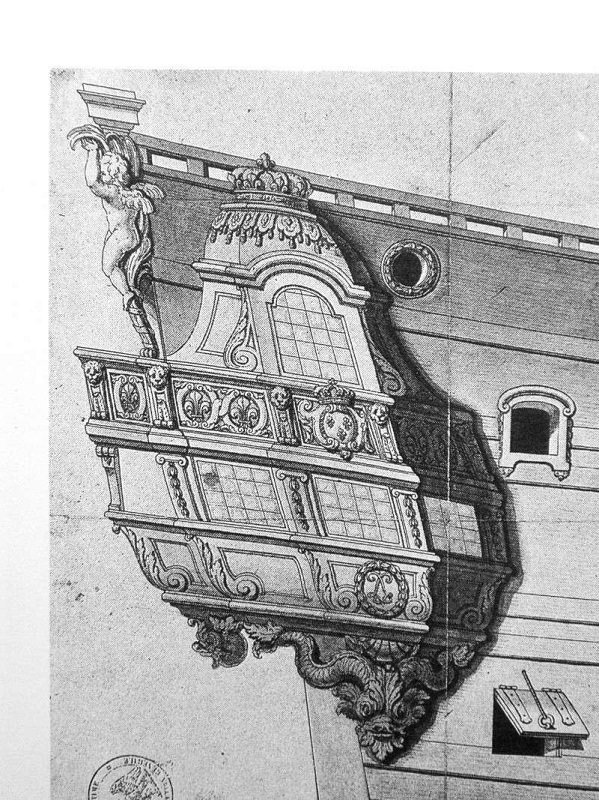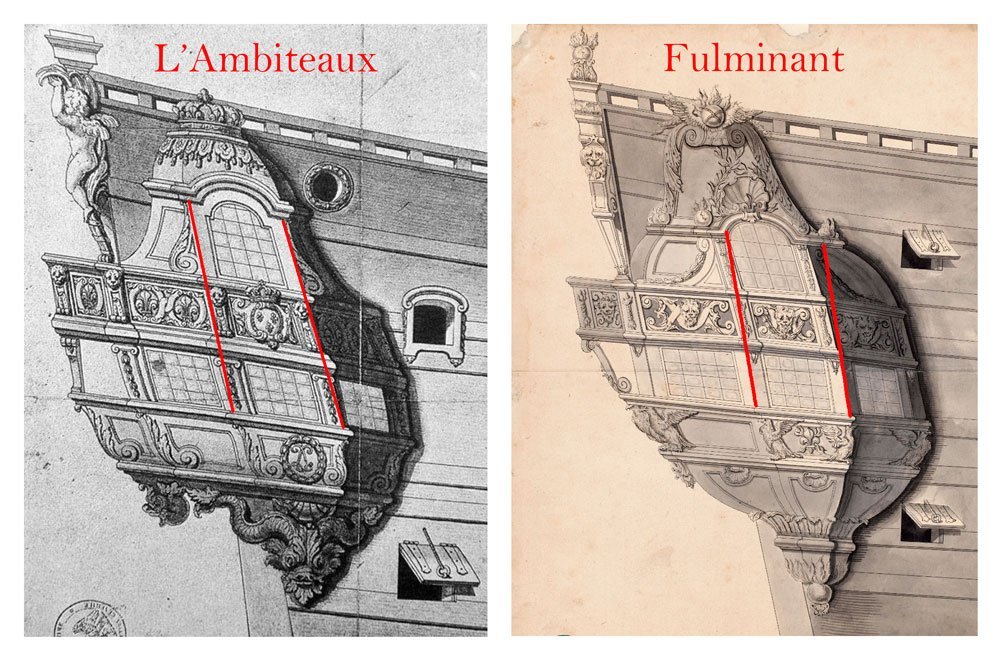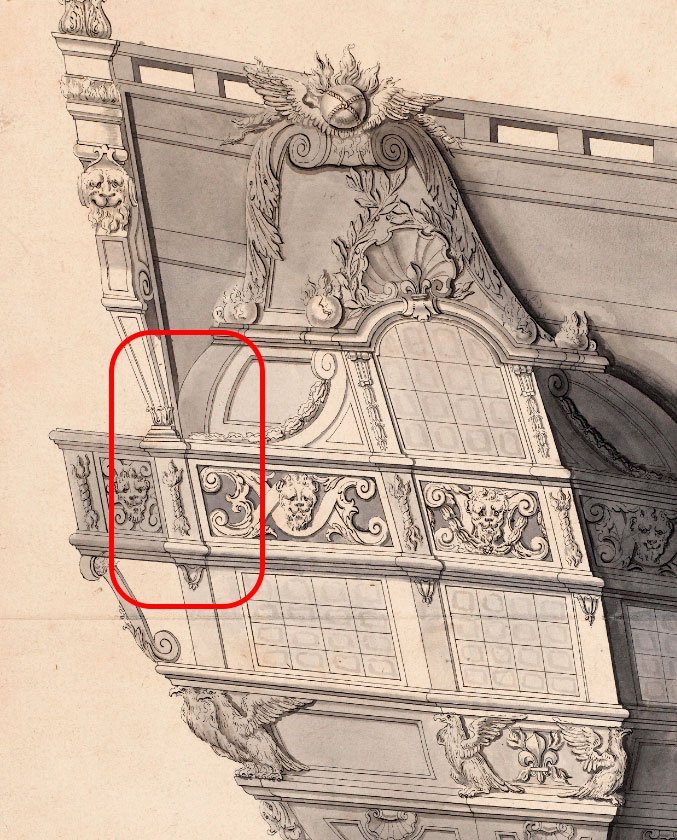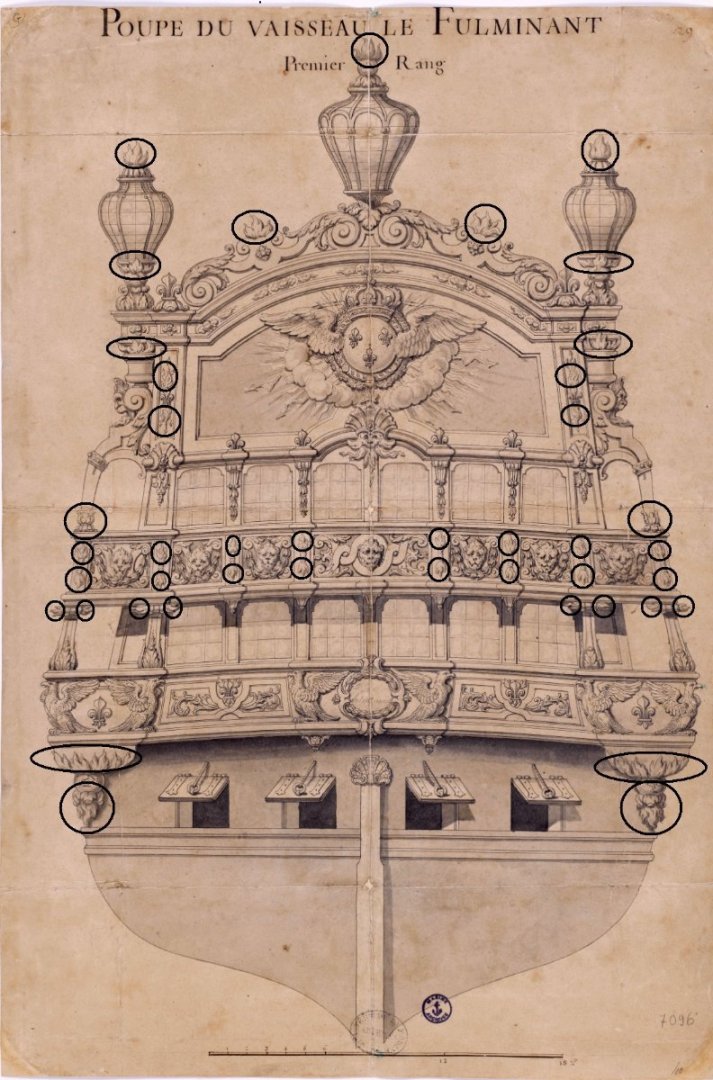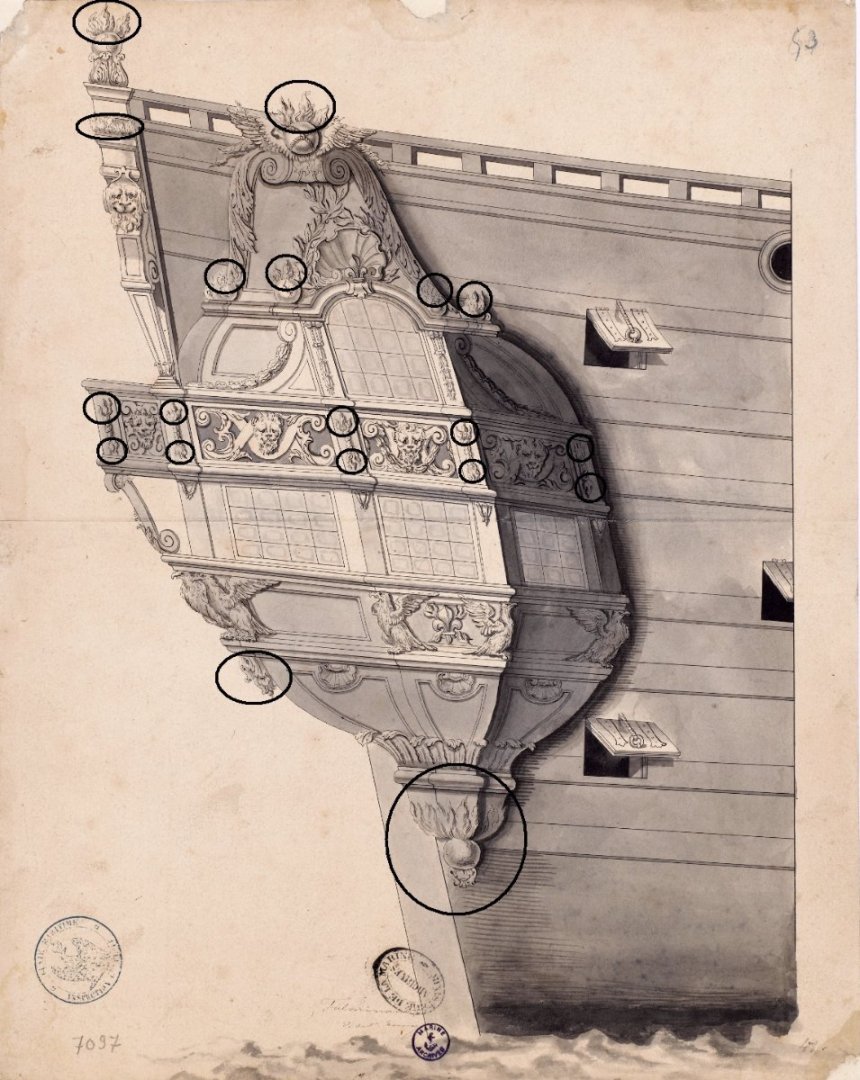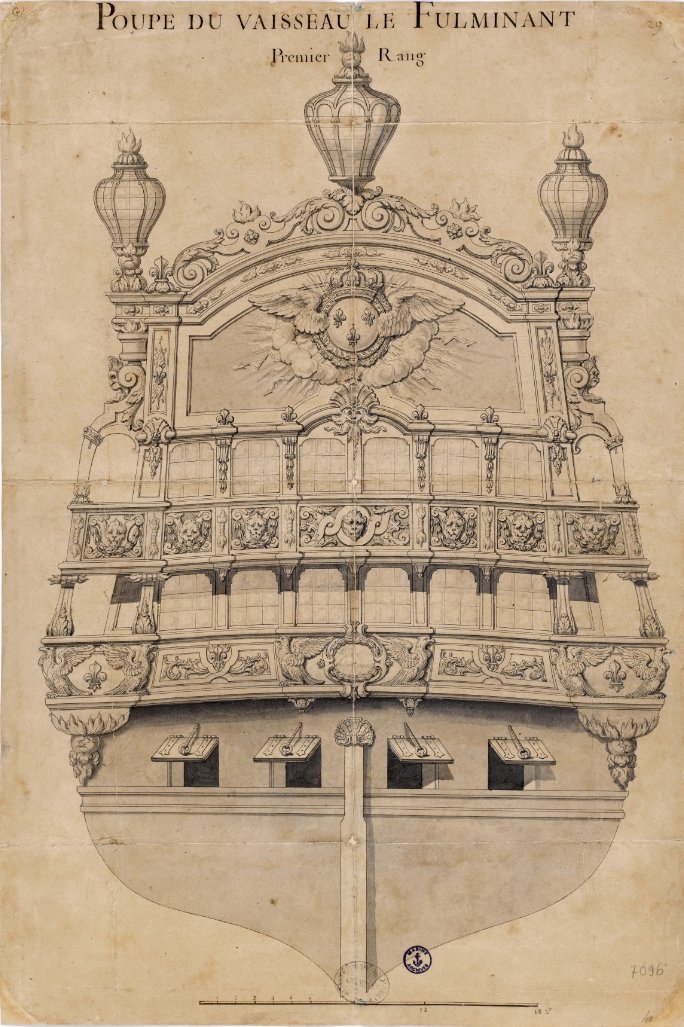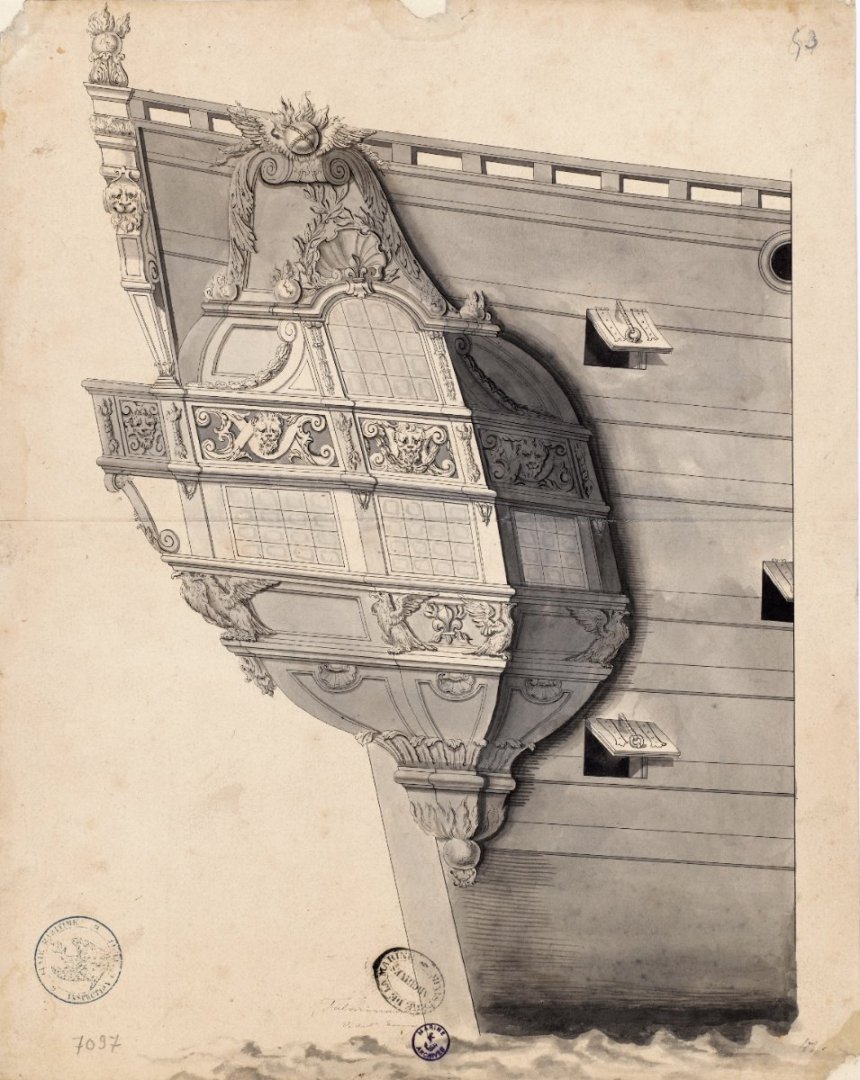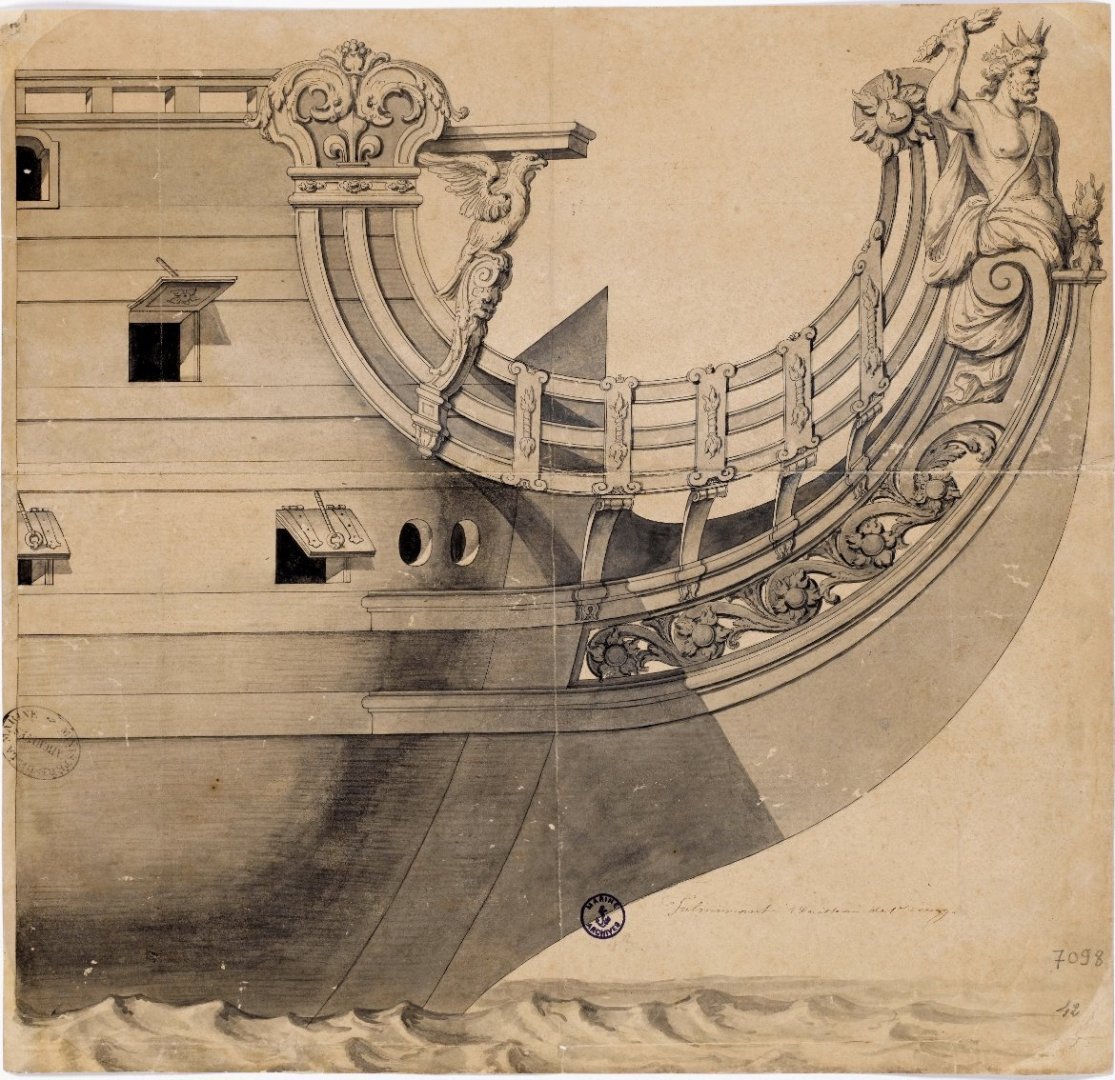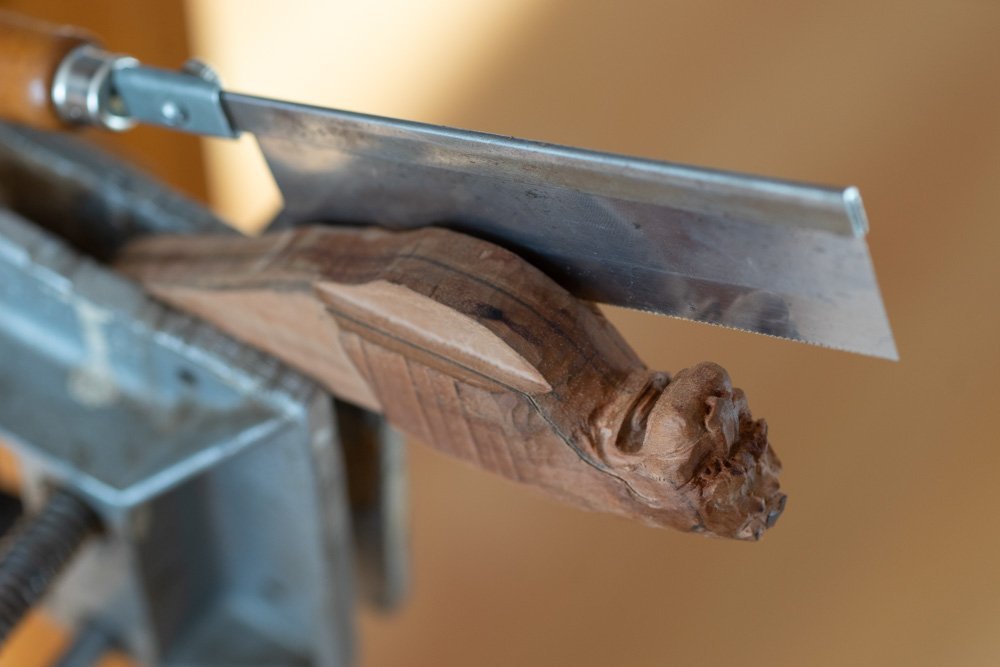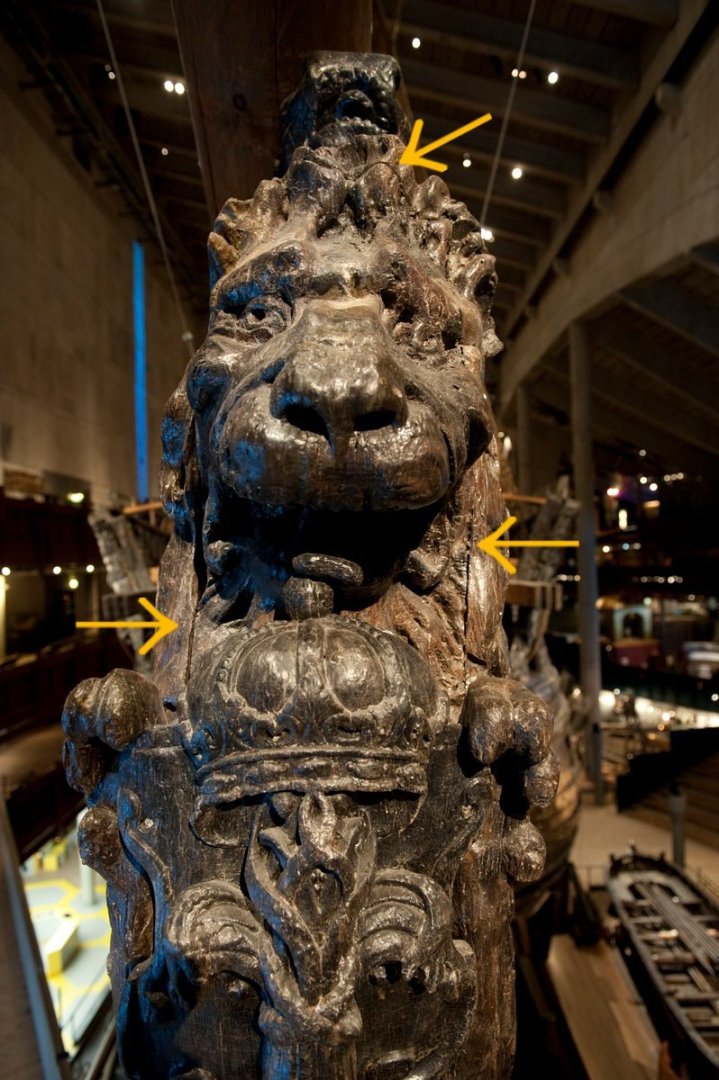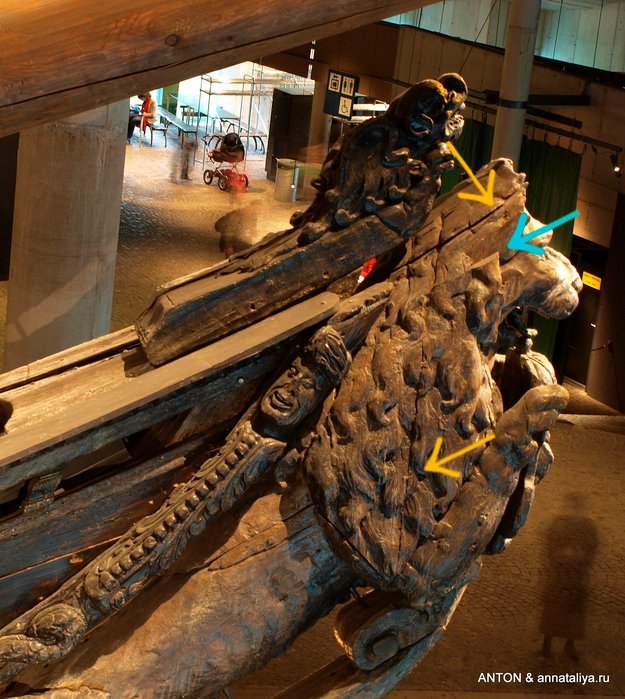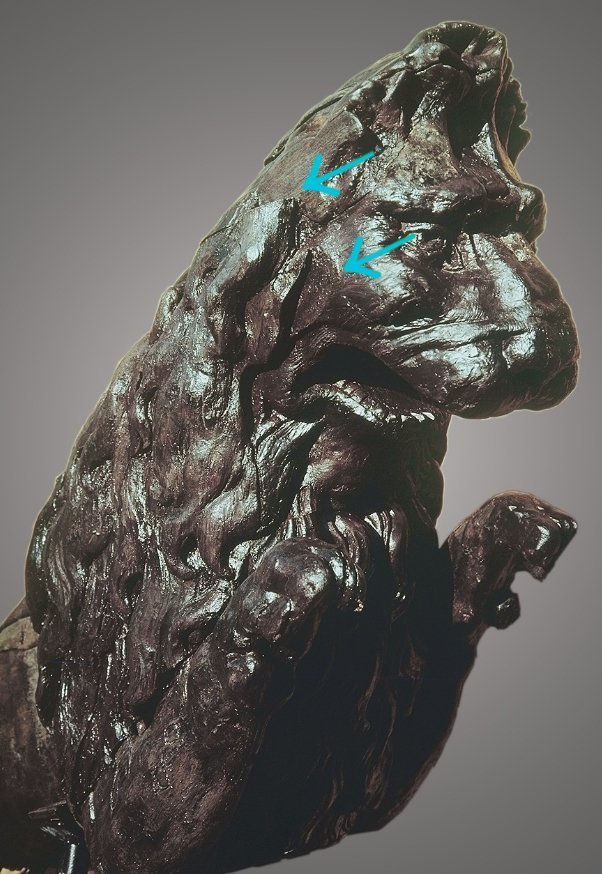-
Posts
297 -
Joined
-
Last visited
Content Type
Profiles
Forums
Gallery
Events
Everything posted by HAIIAPHNK
-
Now let's go back to our Gustav and ask ourselves: did this frumpy image really look that scary? Not to us, was he impressive to his contemporaries? Let's compare this sculpture to the rest of the images on this same ship. After all, this is not the only image of a lion. There are others. Let's look at the impressive duo of bas-reliefs at the stern. Agree, these lions look much more ferocious and scary. And next to them, the lion from the breakwater looks even more like an alcoholic. So, it was made by other masters and they were not professional? After all, that is the conclusion that follows. It's obvious, the difference is enormous. But not everything is so simple. Let's think logically again. This is the most important sculpture on the ship. It's hard to assume that it could have been entrusted to a bad team of carvers. I'm sure that the main artist responsible for all the decoration on the ship would not allow such a thing, because he would be punished first of all. Sounds logical. But! We can see with our own eyes that the lions on the stern look much better. Why is Gustav so different? Is there an explanation? Yes. Let's have a look at these lions. Do you like them? I like them very much. These heads look better than Gustave's, too. Look how expressive the eyes are. The open mouth really comes across as the threat of an angry predator, not a yawn. And look at the fine creases in the eyebrows, the folds of skin near the nose and on the cheeks. The lion is very believable and yet stylized to a kind of generalization that highlights the main elements. The ones that even from a distance will be noticeable. But wait! Let's take another look at Gustav. He, too, has very similar tear-drop eyes. The same bulldog-like corners of his mouth. The folds at the nose. There is a feeling that the sculpture of Gustav reminds a child's lollipop in the form of some figure. As if the child has already managed to suck it for some time and now some features are completely erased, some are still visible, but not so expressive as they were originally. This is purely my opinion, but it seems to me that originally the figure of this lion looked more expressive and clear. What we can now see of the sea and the silt has been sucked up for many decades. I don't know why this lion suffered more than the others, even though they were all on equal footing. And if I were to decide to try to restore the original look, to do my interpretation of Vasa before the demise, I would pay more attention to the other lions and transfer their features to this figure. That's my opinion. I can't say that there is nothing else to talk about in this thread. Yes, nature has modified the appearance of this sculpture. That said, there were flaws here from the beginning that were definitely the result of crooked hands. There was improper symmetry and curvature. There were other flaws as well. And I will talk more about them in the next parts.
-
I'll tell another story. February 13, 1885 in St. Petersburg opened the 13th Exhibition of Peredvizhniki artists. At this exhibition participated all the most famous and talented artists of Russia in the 19th century: Polenov, Shishkin, Makovsky, Pryanichnikov, Kramskoy, Vasnetsov and many others. What was so remarkable about this exhibition? Here is what you can read from the remaining documents: ... In order to restore order, they had to call the mounted police. That is, the public simply poured into the exhibition building and if not regulated the flow of people, it could lead to a crush and injuries. The data on the number of tickets sold has been preserved: 44600. A figure that is impressive even by modern concepts. What was the reason for such a frenzy? The fact that one of the artists who exhibited his new painting was Ilya Repin. And the painting was called "Ivan the Terrible and his son Ivan". Maybe you've ever seen this canvas. I will not now go into a discussion of the plot, whether it actually happened or not. There is still no consensus on whether the murder actually happened or whether it was made up. Speaking of which, it is thanks to this very picture and began to say that this king was a murderer. Before this painting, no one had ever talked about it. There are no documents confirming this fact. But our goal is different. I will cite the words of the author of the painting and what he himself writes about the exhibition: "...The lamps illuminated the picture well and its effect on my audience exceeded all my expectations. The stunned people were silent for a long time, as if enchanted. Then they whispered for a long time, as in front of a dead man. I finally covered the painting with a blanket, but even then the mood did not dissipate. Especially the painter Kramskoi spread his hands and shook his head. I felt alienated from my painting. I was not noticed at all or looked at me in passing with pity". For the society of the time, this was an unprecedented phenomenon. People went to see a picture that caused not aesthetic pleasure, but fear and disgust. Cinematography was not yet widespread. At that time, filming was just emerging and was more of a documentary, showing ordinary reality. The only available way to convey emotions to the audience was theater. But even he could not compare with the effect that gave this still image. Figuratively speaking, that case can be compared by the strength of excitement with the premiere of some "Avatar" or other modern blockbuster. Now, looking at this picture, we are unlikely to experience the same horror as 19th century viewers. For us, we already need more action. Time goes on, and with it the human imagination. This story shows that in the past people could be horrified and awe-struck by images that we would now call strange or funny. And it's important to remember that there is a big difference in our perception. And if we want to convey a work of past centuries, it would not be quite right to paint it with our modern perception in mind. That's one side of the question. And we will not stop there. To be continued...
-
I was planning to touch on this topic a little later. But since now there is a question very close to this topic, why not continue the conversation. I will warn you at once that I will step aside from the topic of Vasa's lion and reflect on various aspects. But we will start with what has already been said. Namely about the fact that the lion's legs are made in more detail than other parts of the sculpture. And even earlier I mentioned that the lion's face is made with a very noticeable asymmetry: the eyes are located at a different level, cheekbones have a different shape. Why is this so? And can any conclusions or assumptions be drawn? For example, are these traces of time or was the sculpture not very professionally done from the very beginning? And now we will step back a little bit and ask another question. What did the sculptors want to show? What emotions was the figure of the lion supposed to inspire? The answer is quite predictable. The lion is a symbol of strength, power and predatory beauty. This animal was supposed to show greatness. Now tell me honestly, can you say that this lion inspires awe? Can you say that the lion has opened its predatory mouth and is roaring? What is the figure itself like? Is it a predator in a leap? Logically this is what the carvers wanted to show. But for me (IMO) the lion looks more like a wrinkled alcoholic, and the pose looks more like a lazy pull-up, not a jump. And what is the right attitude to what we see on historical models? I had a case once a long time ago. I was commissioned to carve a lion figure for a French ship. This model was built according to one of Ancre's monographs, and all the drawings were from that source. Specifically in this book, the lion was drawn by the authors of the book in a stylization that could not be called predatory and scary. Rather even comical. And I tried to repeat the book interpretation, since the customer gave me the source materials, I should stick to them. However, to my surprise, when the customer saw the figure, he did not like it. He said he wanted to see a beast of prey. And this is a funny poodle. And he sent me different photos of modern sculptures where lions were made in a realistic manner and looked predatory. I will put aside the question of how the preparatory conversations should have been conducted, who was right in that matter. Then I redid the figure and made it the way the customer wanted it. Now I remember this case as an example of the fact that nowadays modern people understand by the term "predatory grin of a wild beast" not the same thing that people used to understand by the same name. Why does this happen? We've grown up on a different level of the concept of "scary." We're used to horrible monsters from various horror movies. And we think that a predator should have a very creepy appearance, and yet it will show aggression always and for any reason. If it's a shark, it should chew through everything in its path, not stopping in front of metal cages and harpoons. If it's a bear or a lion, they will find a scent hundreds of kilometers away and will tear the victim until there is no wet spot left of it. And alien monsters can't be killed by anything. They're not afraid of anything, they're resourceful and they're always looking for prey. We are used to exaggeration and believe that a frightening and dangerous appearance must have huge fangs, red glowing eyes and dripping saliva. Yet we still remember that during our childhood and adolescence, we needed much less to make us scared. If we revisit the movies that scared us in the 50s and 60s, they make us smile now. And I remember very well how many times I looked through my father's art albums and books and I was scared to look at the illustrations of Bosch's paintings. It was just a horror that could not be conveyed. Or one of the scariest paintings from my childhood - Apotheosis of War. (originals modified for obvious reasons) I even tried to flip through similar pages of the book as soon as possible, so that I wouldn't even accidentally see those paintings again. This shows that the sense of fear varies. And people are frightened by different images at different times. to be continued....
-
Would you like to suggest placing one of the additional guns in one of the gallery windows? Do I understand the translation correctly? Apparently, the question of the gallery view, whether to make changes to the original drawing of Beren is still impossible to solve without drawing the cannon portholes. Otherwise it could be a problem later. So I followed your advice and finalized the made schemes to the next stage. I combined several drawings and this is what I got. Now you can see not only the gallery but also where the decks run. Where the exit to the lower level of the side gallery is made is also visible. The green vertical lines are the vertical direction of the windows, which was on the Ambitious. And the most important thing is where I would place additional cannons. According to my calculations they should not get into the territory of the gallery. However, for this to happen, we need to make a compression. Here I have shown a medium degree of deformation (option C). If the gallery will be wider, there will be no space for cannon on the 2nd deck. You can see that the cannon porthole is very close to the gallery. I have seen models where there was such proximity. That's why I left it like that temporarily. I don't know how feasible it is, though, won't the cannon's own fire set fire to its own hull? That's the only thing that confuses me. And then I'll have to squeeze the gallery a little more. In short, I've tried to show all the controversial places now. So that it is possible to find the most justified solution. If, of course, I understood your remark correctly. It's very difficult to keep everything going at the same time. If we go from the opinion that Beren's drawing should be recreated as accurately as possible, it would affect that such a design would sit somewhat awkwardly (IMНO) on the hull from Ambitious. The grisaille shows how far away the nearest cannons are. And this does not fit with the general data. If we start from the figures and the already finished hull, it is not possible to leave the sketch in its original form. And here we have to decide how much we can shrink the design of the galleries so that they do not become ugly. A little more and I will feel Budrio to the end and understand why he deformed his sketch so much in his version.
-
Thank you so much for your opinions. I really appreciate your participation. I just don't understand everything. Is it possible to repeat a little differently what this is about? The translator is telling me about the order in Wales or some rollers and I don't understand what is actually written. And in the meantime, I'm going to ask this. I don't know how to properly translate the Russian terms of the whole hinged structure we're talking about now. In Russian it sounds like "shtultsy". Sometimes they say "shell" or "side gallery". And how will this structure sound in English? If I remember correctly, I think it should be called "Quarter gallery". But I'm not sure if it's the whole structure or just the lower part? What is the correct name?
-
Slowly moving on. Historical drawings need to be worked with. Since the basis of the ship is built on book drawings, it is necessary to take them into account. It will not be possible to simply increase to the necessary scale French grisaille and expect that they perfectly match. It would be naive to hope for this. Therefore, the next step is to modify and adjust the drawings so that they look harmoniously on the model. Even a brief glance at the drawing is already enough to notice that the native sketch of the Fulminant is much wider than the one in the book. I roughly brought the sketch to scale and attached both versions side by side. It's funny. When you look at the book version separately, it seems natural and pleasing to the eye. But when the wider drawing of the side galleries appears next to it, the impression of the bookish one changes. Now there is a feeling that the bookish interpretation is too flattened on the sides. As if it lacks air, like a person who has retracted his belly. For the sake of interest, I attached the "Ambitious" sketch to the drawing in the same way. The original, historical version of Beren was significantly wider in this case as well. I wonder why Budrio flattened this design so much? Surely he had good reasons for such a move. It is interesting to note that a comparison of the grisaille with the book shows that the two ships had different angles of the hull sickle. L'Ambiteaux is almost exactly the same in terms of the slope of the horizontal lines. I laid out check lines (in orange color) to make it easier to see. The Fulminant, on the other hand, has a different slope. You can see that on this sheet the orange lines are at different angles. I won't go into this subject, you can clearly see that from the very beginning of the projects the ships had to carry different amounts of armament, and this seems to be reflected in the construction of the 2 hulls. I have to decide what to do with my interpretation though? Do I keep the width as fat as Beren's or follow in Budrio's footsteps? If these sketches had seen the light of day when construction started, more research could have been done and changes could have been made to the hull design, to account for the difference in the sickle. But it's too late to do that now. My goal is to make a decoration that will look logical on the existing hull and please the eye. Correctness of inclinations from the engineering point of view concerns me much less. But aesthetics is not the only issue here. I have already mentioned that the Fulminant had more cannons and they will have to be placed aft. And the wider I make the side galleries, the less room there is for the cannons. Yes, the difference in width is not 2 times, but it can still have an impact. And here are some variants, which I got by rough deformations of galleries. Well here are a few quick variations I got by roughly deforming the galleries. This is the first stage. We leave the visible part of the sketch only what is needed at the moment and overlay it on the drawing. This is what the galleries look like without deformation. And this is how you can see how much wider the sketch is compared to the drawing. Adjusting the slope. In my opinion, this step is necessary. Although in the previous frame you can also find your logic. Then the line of balconies was not on the radian of the location of the cladding, and closer to the line of decks and artillery windows. I like the second option better. The following variations. Here I tried to compare the compression ratio. It is more convenient to follow and compare variations when they are in view all at once. At this stage I do not pay much attention to accuracy. Compressing the drawing I deform it evenly, so the balcony is also compressed, which disappears completely. It is also necessary to bring manually the height of the balcony railing, now they are not where they need to be. This will all be the next step. Later, when I choose one of the options. I will bring it to the finished state. I think I've explained everything that can be explained. Now for the final shot, where all the options are in a row. A- Beren's variant without changes. B- Beren's variant with a change in the slope of horizontal lines. The total width of the design is unchanged. C to D- three gradations of compression. One point to keep in mind. In the last illustration I have taken the rest of the hull out of view. Which means that now you can't see how much room there is for the cannons in each compression ratio. How does it look from the outside? Which option is more pleasing to the eye? Maybe I'm already missing something important in a day's work? I'm intentionally not declaring my opinion now, I'd like to hear an outside opinion.
-
That's a very interesting question. Collective work on a big project is the norm among artists. You can remember how in the painters' art gallery the pupils passed through different stages of their development. And the teacher first trusted them to mix paints, then some separate sections of the painting. For example, the background or hands. And then the pupil gradually grew up to paint more important things. I am sure that such practice was everywhere, and with carvers too. But I don't have exact information about the lion from Vasa and who exactly participated in its carving. The rest we can only speculate. Let's take the logical path. What parts of this figure can be called especially important, and what parts are less important? Logically, the head is a more important part of this sculpture than the paws. Can we assume that the paws were carved by a more professional carver, while the face was entrusted to a novice apprentice? It doesn't seem plausible. Then why do different parts of the figure look different? I think that the answer here should be sought in the question of preservation. I was planning to touch upon the topic of working style on the example of this lion, but a little later. It is a very interesting topic for reflection. Thank you so much for that assessment. I'm glad you like it. I had a lot of fun doing this project. And I would like to show not only the result, but also tell you how the work was done. What questions were asked, what thoughts appeared during the work. What new things I discovered for myself. I am very glad if this version of publishing the work is interesting to others.
-
It's time to go lower. Attached the legs. And all was well. But there was a problem. The main problem was not in the legs, but between them. There lives another element that also needs to be shown. I hadn't paid attention to this place before. And now it suddenly turned out that when making the billet I didn't leave the necessary material for... what should I call it culturally? Let's call it a cockerel. And the problem is that this cockerel is poorly visible. The people at the museum were photographing the top part of the lion. What's below the waist in this figure is rarer. And the place under the belly, where the lion's cockerel lives, is in the shade, and it is difficult to see it. People avoid this sector. Everyone pays attention to the face of the beast. One might even conclude that very few perverts visit the Vasa Museum. I never thought I'd regret it. Well, I'm not going to complain. So I had to be satisfied with those photos, where you can at least roughly see what this mysterious detail looked like. So what to do now if I didn't leave any wood for the rooster? I pondered and decided that the only option left was to add some wood. Cutting off the belly would not work, the waist of the sculpture would be too thin. There were some problems with the legs too. As I mentioned, people take more pictures of the top half. There are fewer photos with the legs. There is a wonderful figure of a lion in the museum, which stands alone. And there is not just one of these figures, but two! One is an exact copy of the lion on the breakwater, in the sense that it copies the current state of the sculpture. The same chips, cracks and so on. And the second free-standing figure was painted so that visitors could understand how the sculpture looked like on a "live" ship. What colors were used to paint it. And these replicas were a huge help to me. However, even in this great gift I found disadvantages. The thing is that both copies stand the same side to the viewer. And you can see the same side on both sculptures. And the same leg. You can't get a good look at the other leg. I found some photos where one of the visitors got into the gap between the sculpture and the wall and took some photos of the back side of the lion. For which I was about ready to put a monument to him. An equestrian one! However, this person photographed the top part of the lion. He forgot about the legs. So one back leg was still a mystery. And I was left with the only way out: I had to look at the other side from afar, in the shots with the ship. There's less light, and more questions about the shape of the muscles. I noticed an interesting detail. The legs were different from the rest of the figure. They were more embossed. You could make out the muscles and veins on them. And the rest of the lion's body, compared to the legs, looked more like a huge sack of potatoes. The reasons for this difference could be different. Perhaps the feet were more mired in the sea silt and therefore better preserved. Or maybe it was the other way around. Maybe the feet were never found at all and modern carvers carved them like this in our time. I don't know how true that is. I won't insist. But on all photos of the sixties, where you can see the rise of the lion and the work on its restoration sculpture without legs. The front paws are in place but the back paws are gone. Whether they were lying separately and just didn't get into the frame or whether the divers never found them remains unknown to me. I ended up cutting them out. And the back paws of my lion are also different from the rest of the figure.
-
Thank you. It's so good to have the opportunity to hear so many opinions. Mind you, I've written you all down. If anyone throws tomatoes at me later, I'll give you all away at once! I will say that I trusted the opinion of professionals. That's a joke, of course. Thank you for your help. Now I have one less mystery to worry about. And I need to come up with a new one, it's too boring without secrets and questions. 😄 P.S. Wow! I found emoticons! One more mystery less.... I'm going to bed or I'll lose another mystery.
-
Yes, it's clearly visible that the decor is made of molding rather than wood. It doesn't matter at all. The decor can be anything. It can be carved from wood, molded from plastic materials, or cast from metal. The value of the model lies in the craftsmanship. Your friend has captured the style very well. It's as if he lived in 17th century France and served as court painter to Louis. Tell me, does he have any other works? Maybe not even nautical. I would love to see the rest of his work. Sculpture, painting, drawing. If it's not a secret, of course.
-
I wouldn't somehow particularly single out Fulminant and Ambiteaux from the rest of the lineup of ships. They had no particular revolutionary distinctiveness. It was not yet time in France to tightly control decoration so that it did not interfere with a ship's maneuverability and speed. Budrio wrote that many ships had to remove particularly heavy statuary after going to sea. Captains tried to make their ships something that could be fought and sailed on. And disputes between captains and artists were still fought such battles under the rug. These words were said generally about the whole state of the navy, and our two heroes of history were just like the rest of the ships. It says much for the fact that the second Ambiteaux was already built with alterations, the extra guns having been removed from it, because the first did not sail well at all. And the difference in transom construction between Foudroyant and Fulminant is explained quite simply. There were no standards. Each ship was the product of an artist. The logic was: if you, as an artist, make all your ships the same, why should you get paid? If you can't come up with something new, then you're a bad designer. So they did something new every time. Something different from the rest of our colleagues. And so that you could find new things for yourself. That's all. The difference is only cosmetic. Nothing more.
-
Give your friend a big bow from me. I was very much influenced by his work at one time. I was very much impressed and for a long time I dreamed of making a main figure from this ship. At that time, I was doing carving on purpose in an accelerated mode in order to be on time for the Universities Cup, which is held in St. Petersburg. It was a wonderful time. To this day, this sculpture remains one of my favorites!
-
The question here is, what do you mean by junior officers? The lieutenants were on the lower decks. Only the captain was on the quarterdeck. The special honorable quarters could be used differently. The captain lived in one, and the other could be a wardroom for meetings and luncheons. In addition, the ship by rank could play the role of flagship in the squadron. Then there was also an admiral on it. Then one cabin was occupied by him and the other by the captain. They both had windows that looked out onto the keel. So the false windows were not so badly needed. The question about cabins could be continued. There was a period when I was concerned about another question. I counted 86 places for artillery on the model. Whereas according to different sources Fulminant and L’Ambiteaux had more than 90 guns. Further the data has a difference, according to some you can read about 92 cannons in L’Ambiteaux, and Fulminant 96 or 98, according to other data both ships had 96 pieces. And that's where to place another 10! cannons? In any case, you have to find a place somewhere aft. Which means some guns will be in the officers' quarters. Which really messes up the layout of the quarters. And there was the huge question of how to reconcile the book schematics and the lack of space for the guns. And how would that affect the appearance of the side galleries? So waiting for the historical sketches was very exciting. However, later I realized that I made a mistake in the calculation and did not take into account 4 barrels, which should have been in front, and look at the course of the ship. So it is necessary to add not 10, but 6 guns, which is already easier. The sketches clearly show that there are no cannon windows in the side galleries area. Which immediately took the extra pressure off me. At least this problem has passed me by. But cannons still need to be added somewhere, which means they'll still end up in the officers' quarters. Which would change the layout of the quarters that Budrio suggested quite a bit. You should see where and how I tried to put those extra 10 seats.... It's both funny and scary to think about now.
-
What are the stronger arguments? At first, it was simple. I saw a ready-made Budrio solution in front of me, just take the book schematics, change the shape and you can build. Then I was confused by this difference with curved windows and started looking for examples. I practically convinced myself that there is an embodied variant. But I could not find a hundred percent proof of it. And now I'm back where I started. Plus now I have a fairly well-reasoned opinion that the flat variant of the upper level is the only correct way.... But why are the windows there so crooked? Why didn't Beren repeat what he had already drawn on L’Ambiteaux?
-
You beat me to it. I was going to follow up with a post listing my doubts, but never got around to it. It's a slow process for me. I have to first formulate everything in one language, then torture the translator a few times to make translations one way and then another. And only then do I have the peace of mind that I can be understood. And then there's the selection of photos. So I've already decided to leave the continuation until another day. I also thought about the arches, for a long time could not find how to call them correctly, once met a special nautical term for this particular element, but I no longer remember it. But you beat me to it. Thank you for that. You saved my time, and I could hardly explain it the way you did. Oh, it's so hard to find the right and logical solutions. Thank you so much for participating so actively in the project. Your thoughts are very valuable! Indeed, if you combine everything drawn on two projections, modern logic fails. It is impossible to combine contradictory information. And at the end you have to conclude that the artist took liberties, embellished something or on the contrary did not mention it. But where exactly is the mistake or fiction hidden? Thinking about what arguments both versions have. To begin with, let's curl our fingers, listing the evidence in favor of the "flat version". And then immediately offer criticisms to the same assertion. 1. Ancre has some wonderful specialists. Budrio showed in the monograph exactly the flat version. And this means a lot. Criticism: The book version has discrepancies with Beren's grisaille. The decoration is not an exact repetition. Nor is the figure of the lion on the breakwater. Did Budrio have all the information on hand or was he making things up on his own? It is mentioned several times in the book that the technical description of the ship is not an exact repetition of the L’Ambiteaux, but rather an average of several sources that were brought together. How appropriate is it to rely entirely on the interpretation of this monograph? 2- The arches on the balcony. This is a valid argument indeed. Why make such a structure when there will be a side wall of a commode immediately behind it, and there is nowhere else to go on the balcony? I was looking at everything I could find for references and noticed that fully voluminous side galleries are found on relatively small ships. There yes, they made ribs in the form of curved spandrels, stitched then planked and then decorated with bas-reliefs on top. But in all cases, when the ship had balconies that wrapped around the sides I saw only a simplified flat version of the dome at the side gallery. Plus wherever there are arches, there was also an open balcony. Critique: I am not a strong connoisseur in the French school. And the fact that I haven't come across specific examples where the arches stand on a cul-de-sac may also speak to the need to look for more. Which is what I've been trying to do. Asked about building similar models at the same time. Criticism to criticism: It's fair to say that the search never led to otherwise. There is not a single case that I can cite as an example. Now let's see what arguments the volumetric dome has. I. The deliberate use of light and shadow has a special place in the sketch. The eye sees a voluminous figure. A flat design will not have such shadow patterns. Criticism: It should be clearly understood that Beren's drawings are not sketches from nature, the artist did not draw, having before his eyes a ship in the harbor. It's a kind of fantasy taken from his head. It was necessary to make a drawing that had yet to be built. And hence the drawing of light and shadow may well be taken as an inaccuracy. II. Why exactly does the sketch of the Fulminant show the distorted directions of the vertical lines? If it is not an attempt to show optical deception on a rounded volumetric form, it looks very strange. What prevented Beren from drawing even lines? This question will persist either way. Even if I settle on a flat version of the top tier, I will still have this very question hanging over me: why such curvature? Is it to preserve it on the model, or is it better to straighten the vertical lines? What was it about L’Ambiteaux that you could make it straight there, but Fulminant doesn't anymore? If I decide for some reason that it's right to do a volumetric 2 tier, I'm more likely to just ignore that curvature. Translated with www.DeepL.com/Translator (free version)
-
So, the drawings have arrived and now the huge part with coming up with the decor is solved. I now have the exact details of the decoration. But along with that came questions about the Fulminant's construction. Let's take a look at what the stern looks like on L’Ambiteaux ship. I want to draw attention to the construction of the side galleries. The upper tier with the dome is made in the form of a false overlay. The dome is flat, the window is actually an imitation. And the total thickness of the whole structure is quite small. And now let's look at the historical sketch of this ship. Here it is difficult to say for sure that the same dome is flat. And you can argue for a long time how it should have looked in reality? Flat or voluminous? On different museum exhibits one can see both fully volumetric constructions, where there are several tiers of closed balconies. And in the form of simplified flat domes, as the authors of the book decided to do. Now let's take a look at some fresh, hot drawings by Fulminant. The first thing to note is that the drawings were done in the same period. You can see that the ships were built at the same time and they were designed together and approved by the king also together. One can even combine the drawings with each other and see that in many respects they are very much the same in design. Only the decorations are different, and even then, they are made in the same style. But as for the drawings of the side galleries, they are different. Fulminant has a strange deformation in the vertical lines. The windows of the lower and upper tiers stand at different angles. And it's definitely not a defect in the scanning of the document. It's the way it was drawn. So why is the drawing different? L’Ambiteaux doesn't have this distortion. What was the artist trying to show? It seems to me that by using such distortions the artist wanted to show a volumetric dome. That both the lower tier and the upper tier were to be made in the form of closed lodges. And this is exactly what it would be more correct to do on the model. What do you think? I don't feel like doing just based on my opinions. I believe modeling should be based on correct knowledge. If it is about assembling a model ship out of the box, then there can be no claims. But serious work should be based on knowledge. And here I face the fact that book drawings will not help. It is necessary to find other information about how volume domes were properly made. For example, I have a question how should the wall on the balcony itself stand? Should it be one level line with the stern? Or at an angle? If someone has photos from museums where you can see this assembly closer, please show me. Or maybe you know threads on some forums where similar ships were built? Maybe someone has already shown how they solved this issue at their shipyard?
-
Decided to add this material. It's not a response to anyone's comment. And I should start by explaining the situation. This is a response from a customer from our correspondence with him. It is quite possible that for many people the content will not be something useful, as it was primarily directed to me, as a person for whom French speech and mentality is not native. And therefore not always understandable. So you can read about something that for you does not require additional explanations. In this case, let it be a small note that I leave in the topic for myself. So that in case of need, I know exactly where I can return to this material. It is much easier to lose in correspondence, there are a lot of letters, and it will be harder to find it later. Besides, the letter was translated into Russian by the author and I have to translate it again. And because of this, some nuances can be lost. So why was this letter needed, and what did I personally see the benefit in? It is absolutely logical that Latin is much more closely connected with many European languages than with Russian. Today, none of us speak this ancient language. But you may encounter words in it that have passed into your languages over time and are familiar to you. Which is much less common in my language. And the word "Fulminant" is not found in Russian in ordinary life. It may be known to doctors or physicists, in their terms this word occurs. But I'm neither a doctor nor a physicist. So I needed a translator. And that's where a little detective work begins. The translator gave me the result that in Russian the name of the ship means "lightning-fast". I'm not sure the translator translated what I was trying to say correctly. So I'll say it again, in a slightly different way. It's a word that consists of two words: zipper + carries, or "one who has zippers". But in Russian, this word is primarily used when they want to talk about very high speed. For example: this boxer has a lightning-fast reaction. That is, he reacts or attacks very quickly. Or: she answered his question with lightning speed. In short, in Russian, this word is primarily compared to the speed of lightning. And in our case, it is doubtful that the name of the ship was meant to indicate its swiftness. Such a meaning would be a mockery. A huge, clumsy giant that has the name Speed. Army humor has come up with much funnier sarcasm as well. But no one would joke like that on an official level. So the name "Fulminant" must mean something else. And if there was a connection to lightning here, it was not because of its speed, but because of its power. So the ship was saying with its name: I have a power that only the destructive power of Zeus can match. And here around the name of the ship on Russian forums began a real discussion, what exactly means the name. What the builders in the distant 17th century wanted to say, and how one could guess who should stand on the breakwater. There were so many different opinions. That was before the long-awaited sketches from the archives arrived. And that's when my customer read the arguments on the forum and sent me an explanation. Below I quote his words in full. And I really hope that the translator will do a good job (if there are grammatical or semantic errors in the text, it's not the customer's fault, but the translator's): Hi, Sasha; Fulminant means "burning flame" in Latin. I have circled all the symbols with flames in the original plan. It is interesting to note that these flames are very often elevated above the sphere. The combination of sphere and flame clearly represents a military grenade. I also took a closer look at the lions' heads: at the rear of the ship, they are indeed lions, as two protruding teeth are visible.... but on the sides (on the flanks) the figures no longer have teeth. These figures are called "fauns" or "grotesques" and are very characteristic of the rocaille style established by the naval sculptor Bérin during the reign of Louis XIV. That's the kind of writing that's going on. It was a very good addition for me. And thanks to him I now see and understand a little more. Before, I didn't pay attention to how many images of flames there are. It's even funny, I saw the small lightning bolts, but I missed the flames that were nearby. Once again I repeat that maybe for you all this was clear and well seen. But maybe you have not considered so detailed drawings, this information will be useful for you. P.S. The words in the letter about lion heads and fauns referred to specific discussions on the forum. One of the opinions concerned decorative elements on the lower tier of the aft windows. The person wondered if they were definitely lions. Maybe they are portraits of Louis 14? Such a symbol was widely used in this period. And that's what one of the panelists saw in the drawing. That would explain a little bit about why the letter said lions. It also shows how heated the debate was.
-
This is the moment. Got the photos of the sketches. They are published for the first time. I want to say thank you to everyone who participated and left comments. To everyone who offered their versions and helped to think over an interesting question. Because it was this discussion that made it possible to find these photos. The thing is that originally it was planned to put a ready-made figure on the breakwater. It was a very high quality sculpture, but it was very far from the meaning of this ship. So I want to say thank you to everyone. And in the end, the customer was so interested in the search that he decided to change his mind and decided that it made sense to make a new figure that would be made specifically for this model. And I want to say a big thank you to him. Thank you for being able to find these sketches. Now what's left is to make the main figure so that it's of sufficient quality. And it's worthy. I'm also very happy that it actually turned out to be Zeus. To be honest, I'm very pleased that I was able to correctly decipher the clues and guess what was actually on Fulminant. The first page in the history of this project can be considered completed. Now we can move on. Based on the new images, the design and construction of the stern ensemble can begin. Build balconies and side galleries. So that in the future it is possible to proceed to the decoration itself. So some construction time is needed to continue publishing. What else would you like to note? One mystery is solved, but there are others. And I'll voice the other riddles a little later. So I'll be glad if the communication continues.
-
What kind of sadistic footage is this, then? Why saw poor Gustav? I'll tell you about it It was an interesting moment for me. And it took me a long time to decide. What's the point, what is it about and why was there agony of choice? We all understand that modeling is first of all an art. We take away the models made for technical needs, different experiments. In the vast majority of cases we create images. Imitation of what exists (or existed). And like any image, ship models can be simplified. By way of another lyrical digression I will remember how once in my childhood I read somewhere in the newspaper an essay about an elderly modeler. I don't remember who they told about. I remember that the author of the article wrote that during his visit to the workshop, the elderly master mercilessly ripped off his model skin, which led the journalist in a state of horror. Why, it was beautiful as it was? The modeler replied that he had recently found information that the real sailing ship was built of a different wood. And the planking of his model turns out to be erroneous. It was not so (say from pine), and should be oak or bamboo (again conditionally). So everything will have to be redone. Modeler, in his opinion, must exactly repeat the historicity. I don't know if there was actually such a dialog or if the journalist made it all up? At that moment, in my young years, I did not see anything strange in this event. In my eyes, the elderly master was a kind of hero. He was ready to make sacrifices, to remake for the sake of historical truth. Cool! Now I realize how naive I was. I understand that a modeler can deviate from historical realities. To change by virtue of taste or idea material of plating, on tiny ships in a bottle instead of small yuphers to make drops of tinted glue. And that's fine. And I already look at the elderly craftsman with different eyes. Now I would probably first of all think about how good it is that Sensei chose a sailboat for the model and not a submarine or an icebreaker. Otherwise, all of a sudden he decided to make nuclear reactors with handfuls of plutonium. For the sake of credibility. I'd leave room for admiration, though. If a person can make a model out of oak so that in the end the fractional texture of the wood remains proportionate and does not spoil the overall appearance, then he really is a master. Isn't he? Anyway, we all choose the degree of simplification on our models. And now I am also faced with a choice, but what exactly do I want to show? To what degree do I want to go into detail? What exactly will my Gustav be like? After all, he could be the lion that was just carved. And the ship is due to be launched tomorrow. And I could leave it wooden, or I could paint it, making it look exactly as it did before I died. I can also make Gustav, who was pulled up from the bottom. With the wounds, the chips. And that's when I took a closer look at the original. The beauty of it was that you could see exactly what the structure looked like. Separate handles and legs. But that's not all. Take a look at these shots: This angle was already there last time. But now I've pointed out the seams. Here they are in the other photos: That is, in reality the figure was not one piece. The mane, the back of the head were docked in separate pieces. And where the blue arrow is placed you can see the places of chipping when part of the overlay flew off. And it's clearly visible. Here is another angle where you can see it even better: So I was wondering. What am I going to do? Would I now have to mercilessly chop down the initial figure to make it look like the historical original? The first shots with the hacksaw leave no room for intrigue - that's what I did. But at the same time, I didn't. What's that? I removed the top of the head completely. I glued an implant in its place, and then brought it to the right condition. I didn't saw off the sides and the mane. Halfway through I examined everything and decided that I would do it simpler. It is not necessary to cut everything completely to simulate seams. The thickness of the cut is thin enough that it looks just like the original. If I cut it off completely and glue it on, the gap will be gone. Do I have to do that? No. So I started looking at other angles. I looked to see if I could see the gap everywhere. Logically, it should look different. In some places, the extra pieces fit closely together and there's no gap at all. And somewhere it is already very visible. That's what I tried to repeat. This is a story about making it.
-
I have a very important message! Thanks to Russian and Ukrainian modelers and a similar topic on the Russian forum found data, which revealed that sketches for the Fulminant exist. They were created in the 17th century to coordinate with Louis 14 to build a new ship. Moreover, they were preserved and registered in the French archive. And it was these very registration numbers that were found. And the customer made a request for these sketches. We've already received a reply from the archive. They said that they will satisfy this request. Moreover, it turned out that since the 17th century no one has touched these sheets. I'm sitting here imagining that the last time Louis saw these drawings. It's a joke, of course, but it's close to the truth. So very soon I will be able to see what I have been thinking about and trying to imagine. What is really there? Have we collectively deciphered the available data correctly or not? Is there a Zeus or a lion or something else? So now we just have to wait a little longer. I really hope it all works out. There are fears and worries that over such a long period of time the sheets with sketches have deteriorated and it will be impossible to use them. I realize that working with archives is not something unique. That this is the norm. But for me this moment is unique.
About us
Modelshipworld - Advancing Ship Modeling through Research
SSL Secured
Your security is important for us so this Website is SSL-Secured
NRG Mailing Address
Nautical Research Guild
237 South Lincoln Street
Westmont IL, 60559-1917
Model Ship World ® and the MSW logo are Registered Trademarks, and belong to the Nautical Research Guild (United States Patent and Trademark Office: No. 6,929,264 & No. 6,929,274, registered Dec. 20, 2022)
Helpful Links
About the NRG
If you enjoy building ship models that are historically accurate as well as beautiful, then The Nautical Research Guild (NRG) is just right for you.
The Guild is a non-profit educational organization whose mission is to “Advance Ship Modeling Through Research”. We provide support to our members in their efforts to raise the quality of their model ships.
The Nautical Research Guild has published our world-renowned quarterly magazine, The Nautical Research Journal, since 1955. The pages of the Journal are full of articles by accomplished ship modelers who show you how they create those exquisite details on their models, and by maritime historians who show you the correct details to build. The Journal is available in both print and digital editions. Go to the NRG web site (www.thenrg.org) to download a complimentary digital copy of the Journal. The NRG also publishes plan sets, books and compilations of back issues of the Journal and the former Ships in Scale and Model Ship Builder magazines.



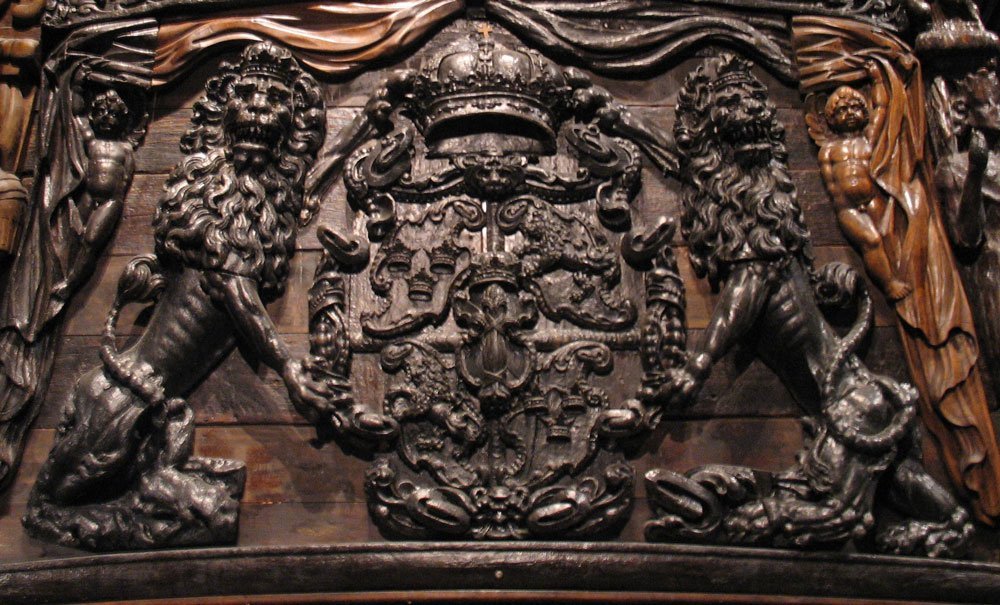
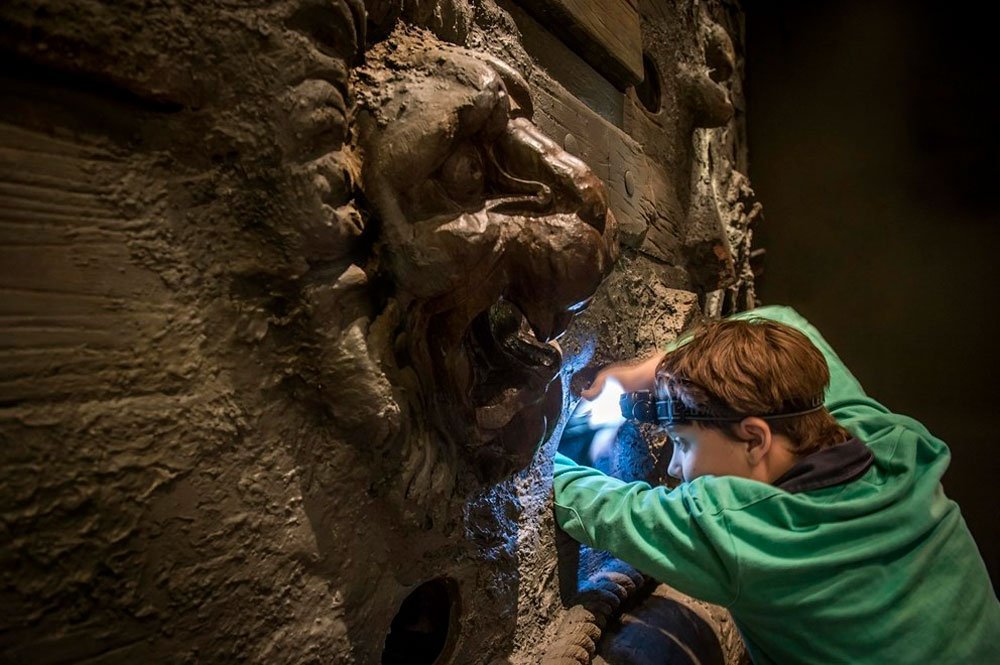

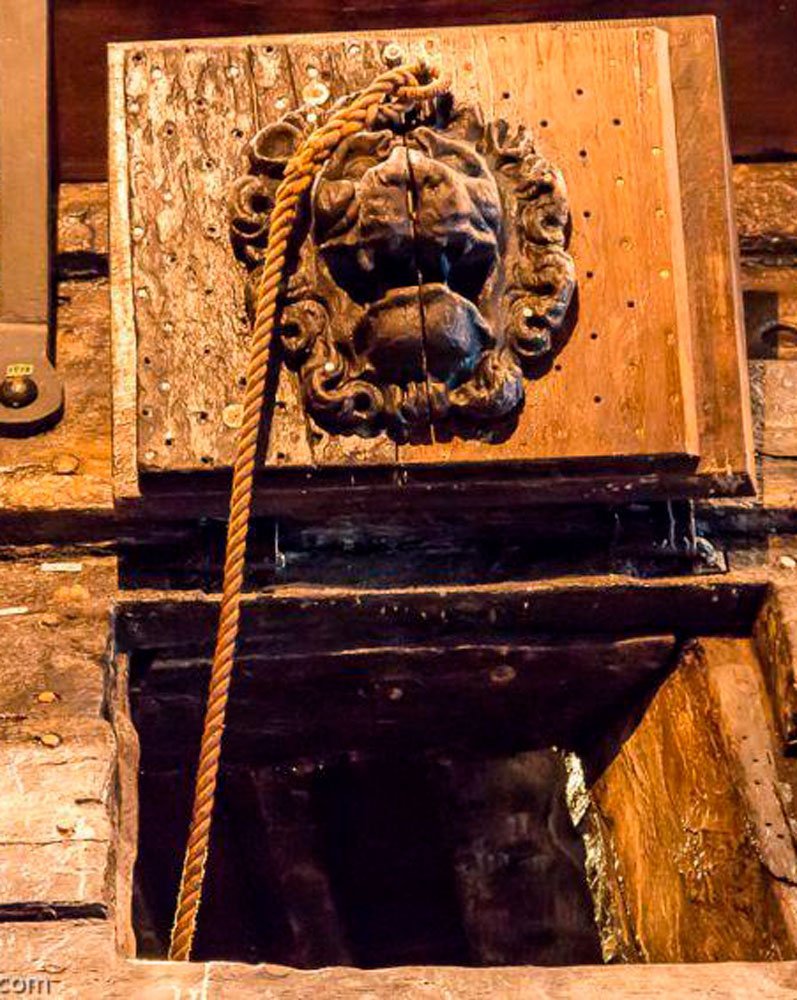
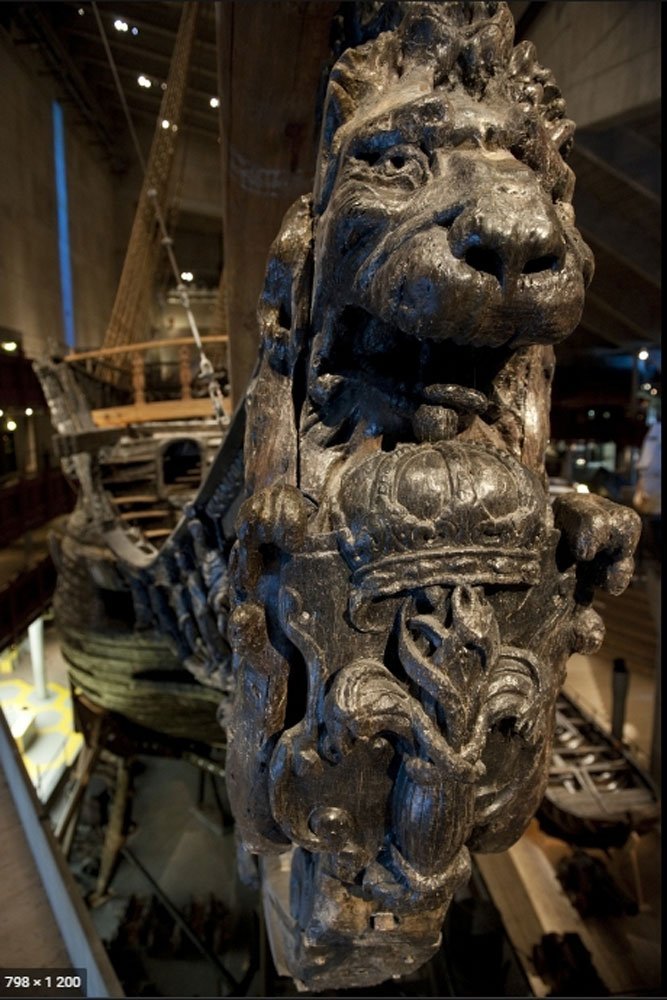




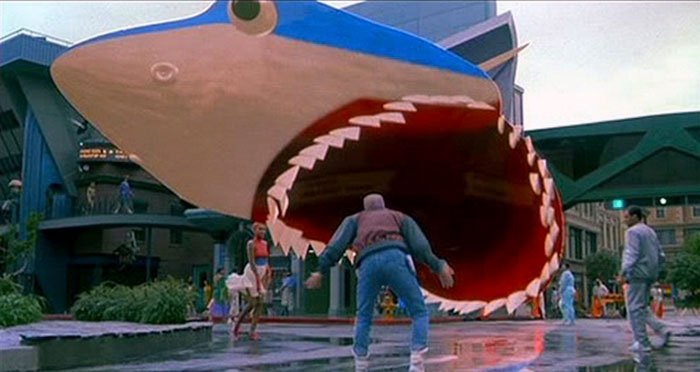
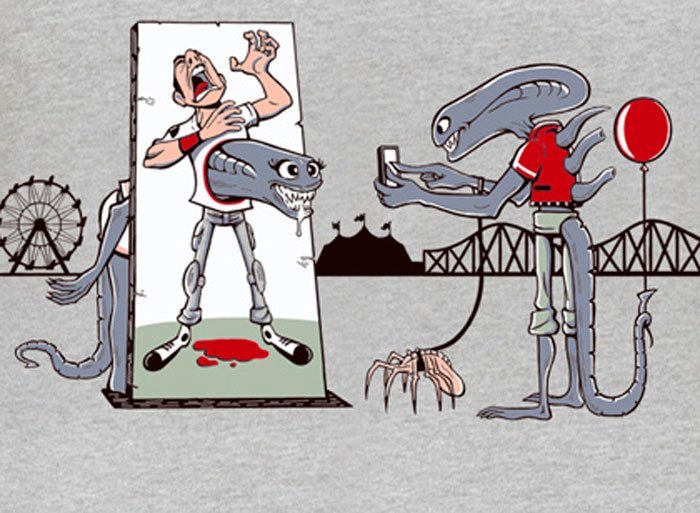
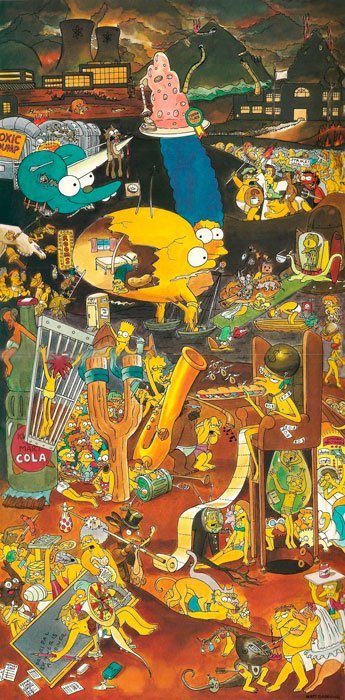

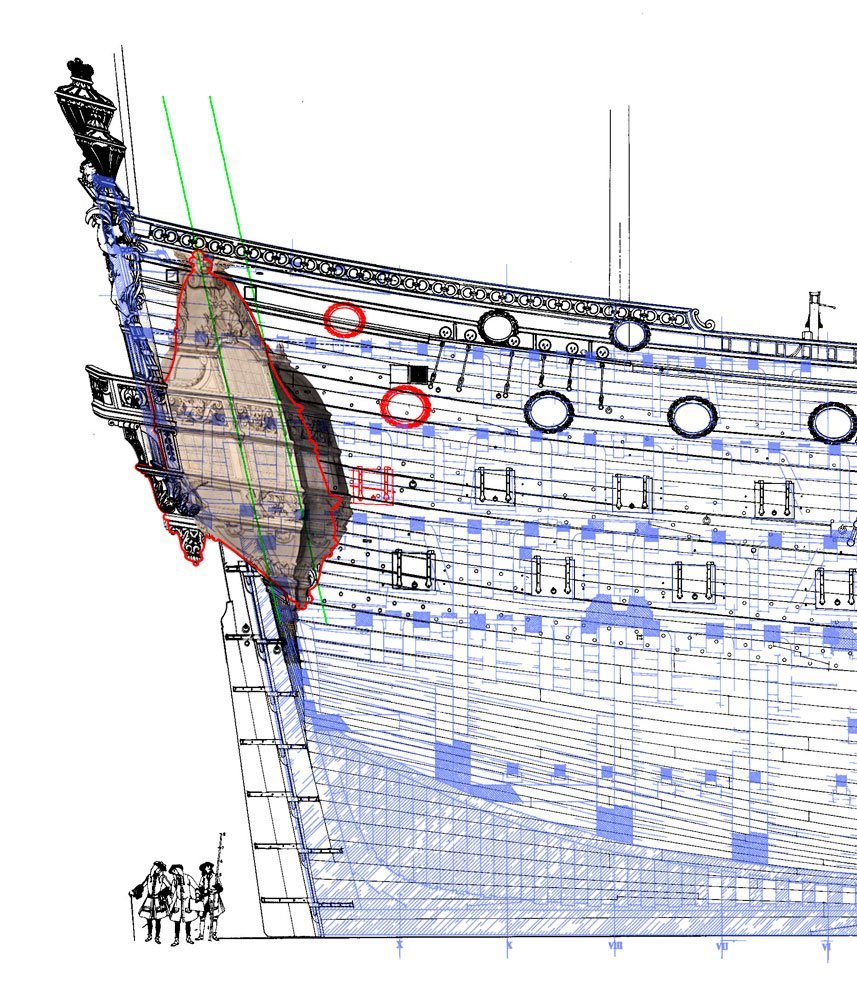
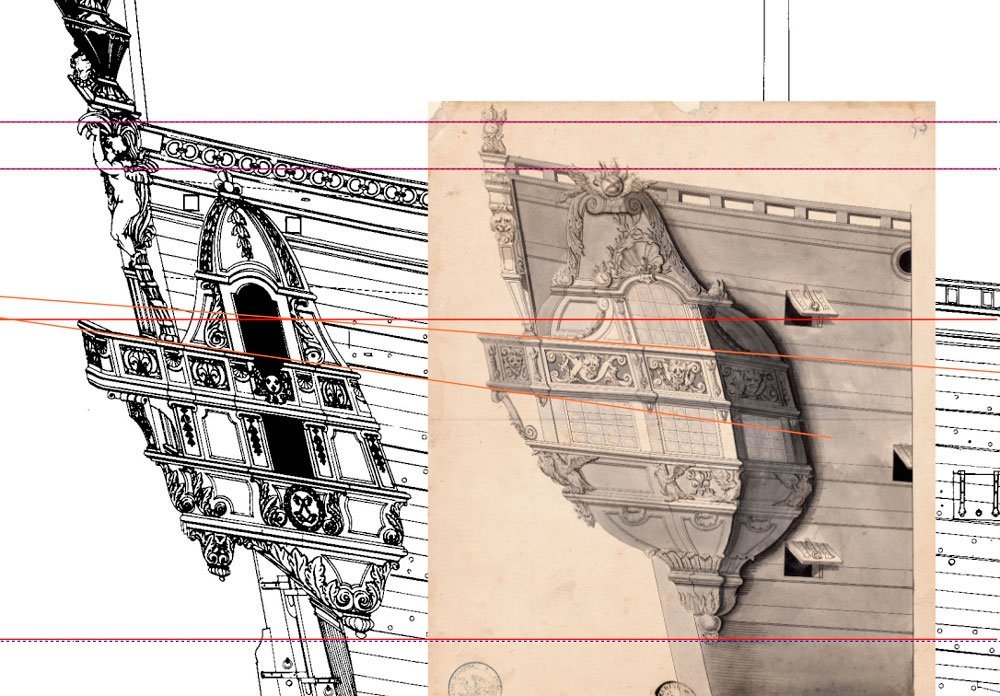
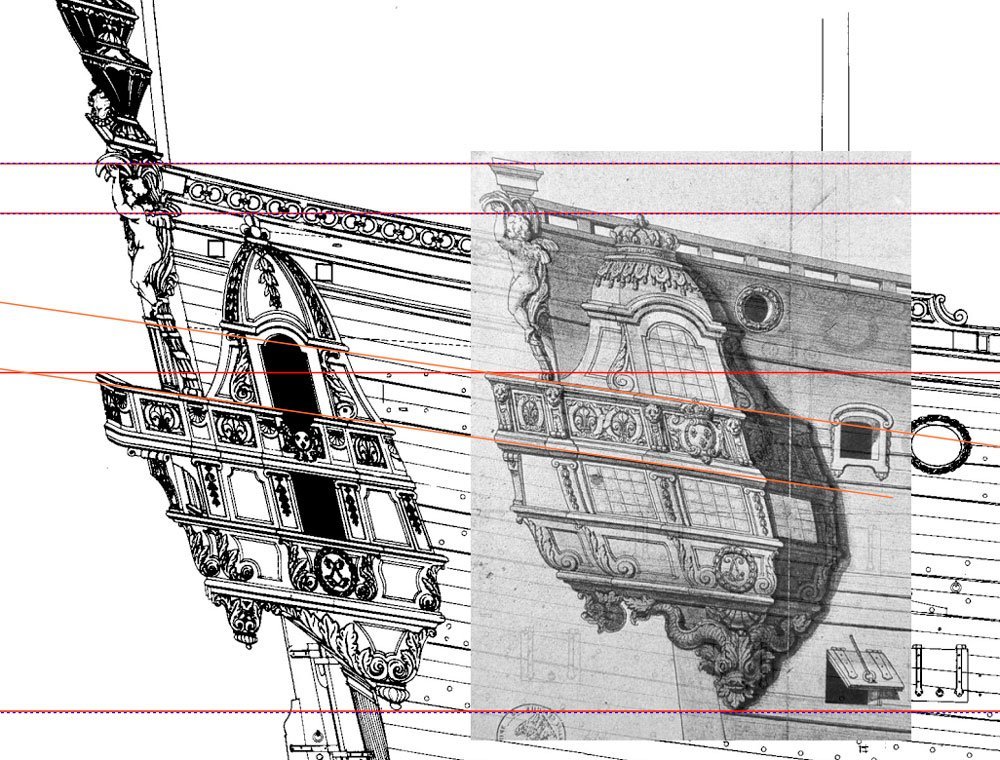
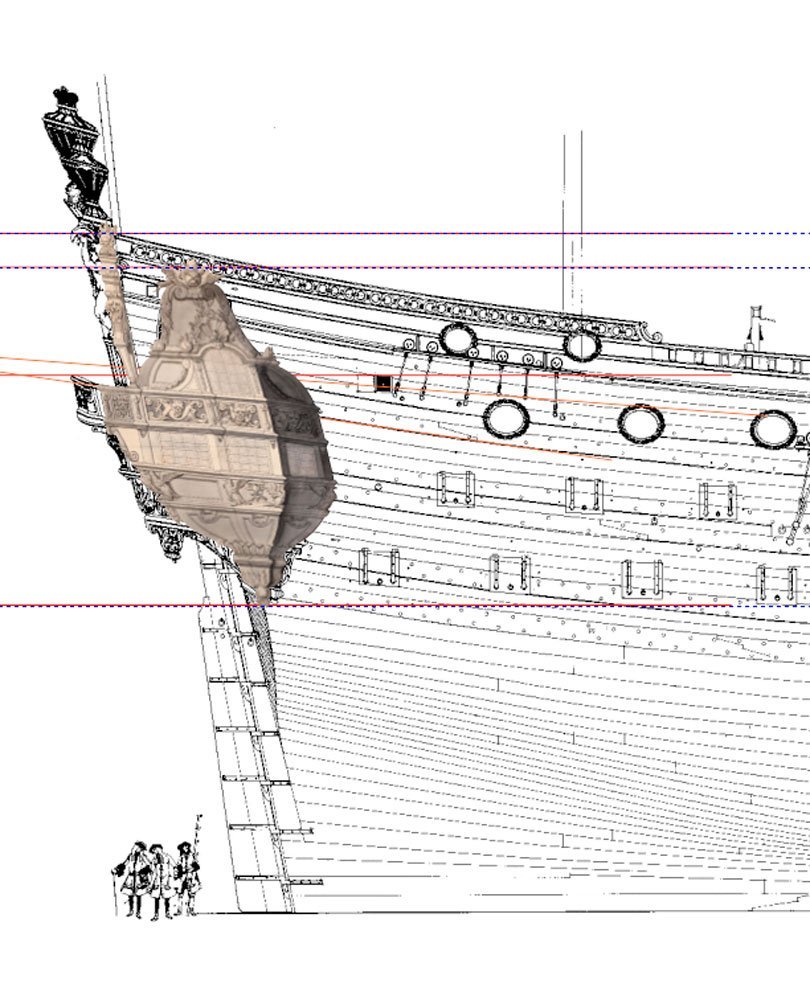
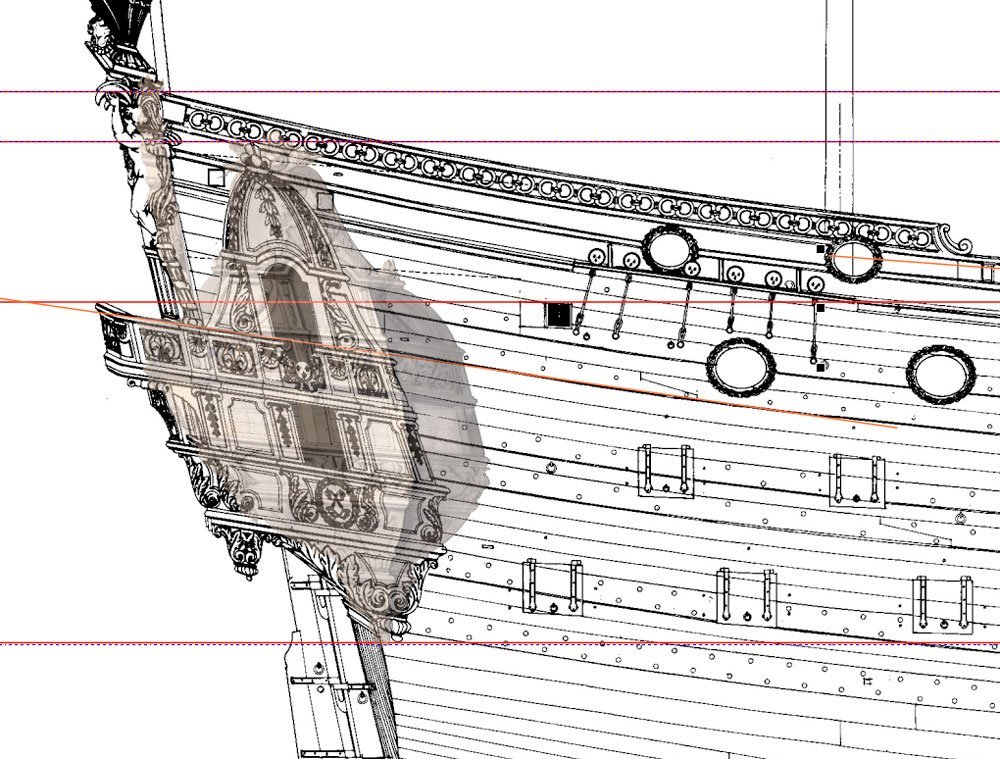
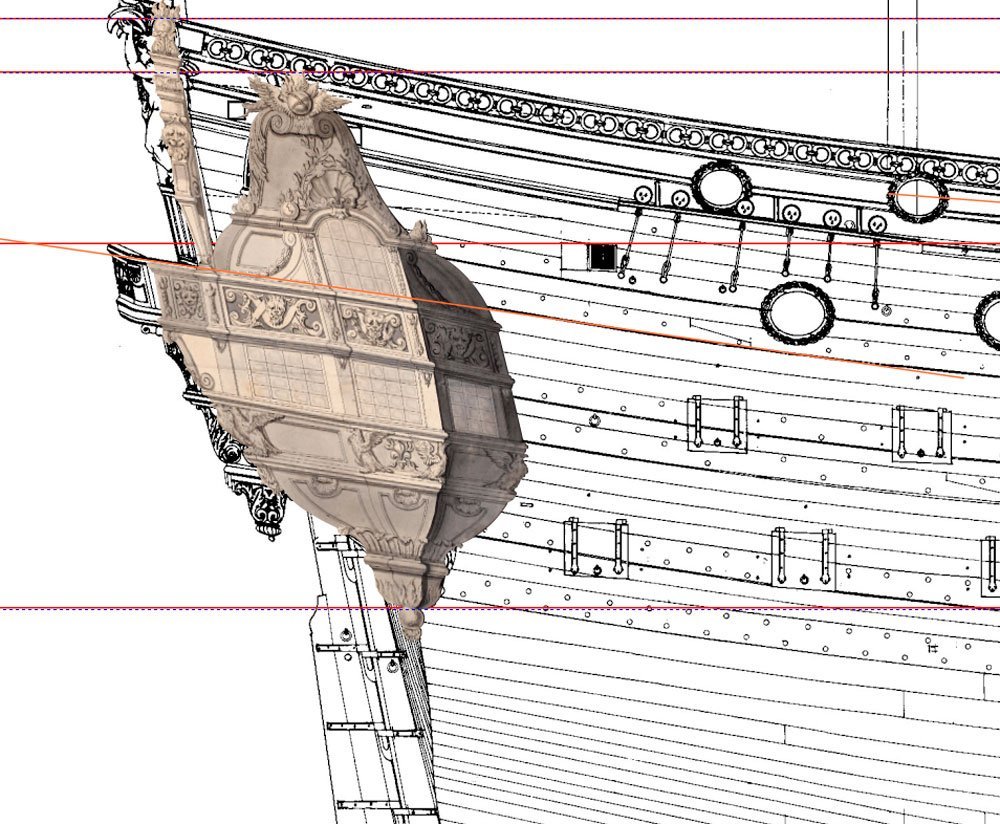
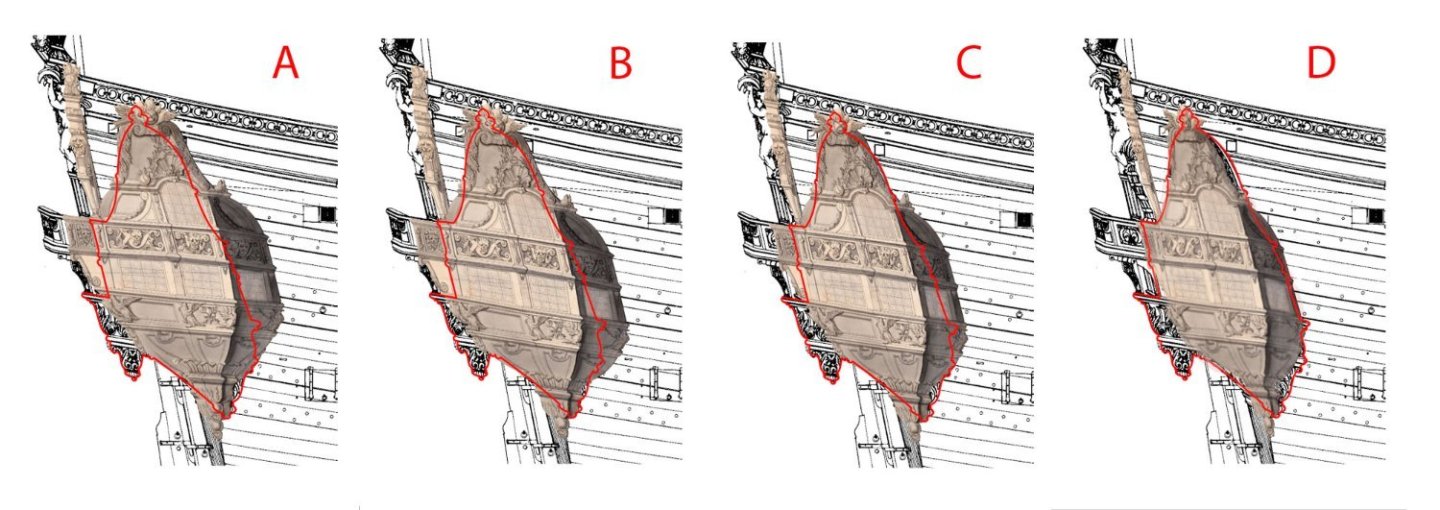
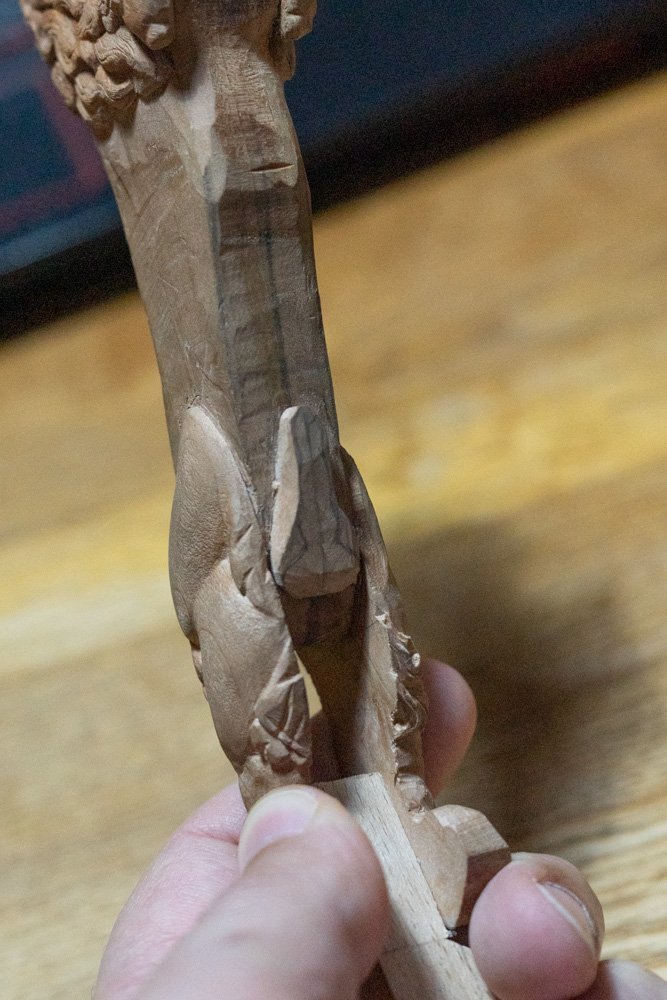
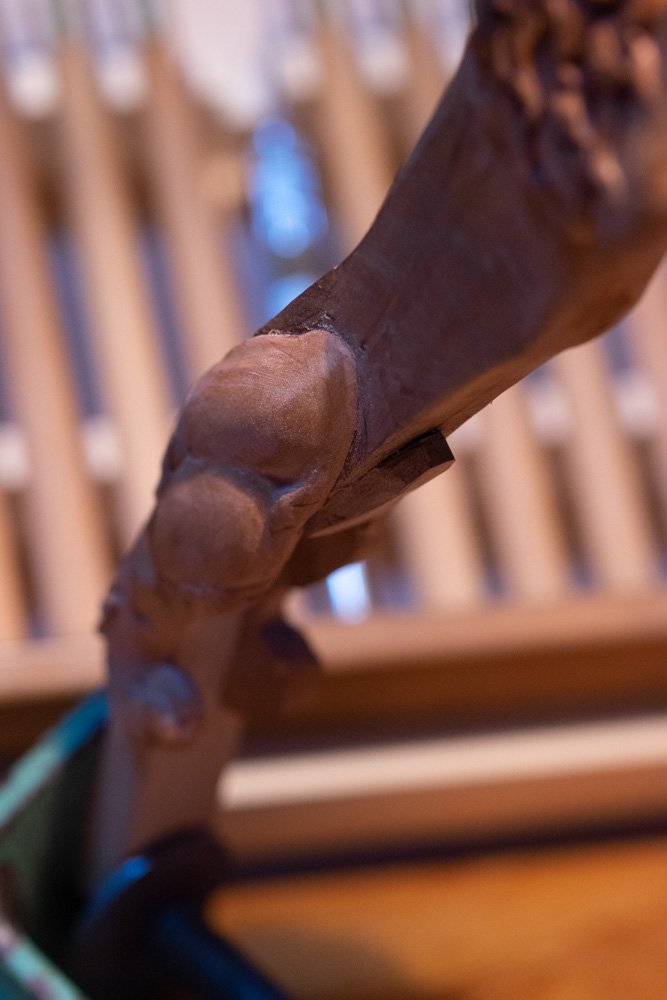
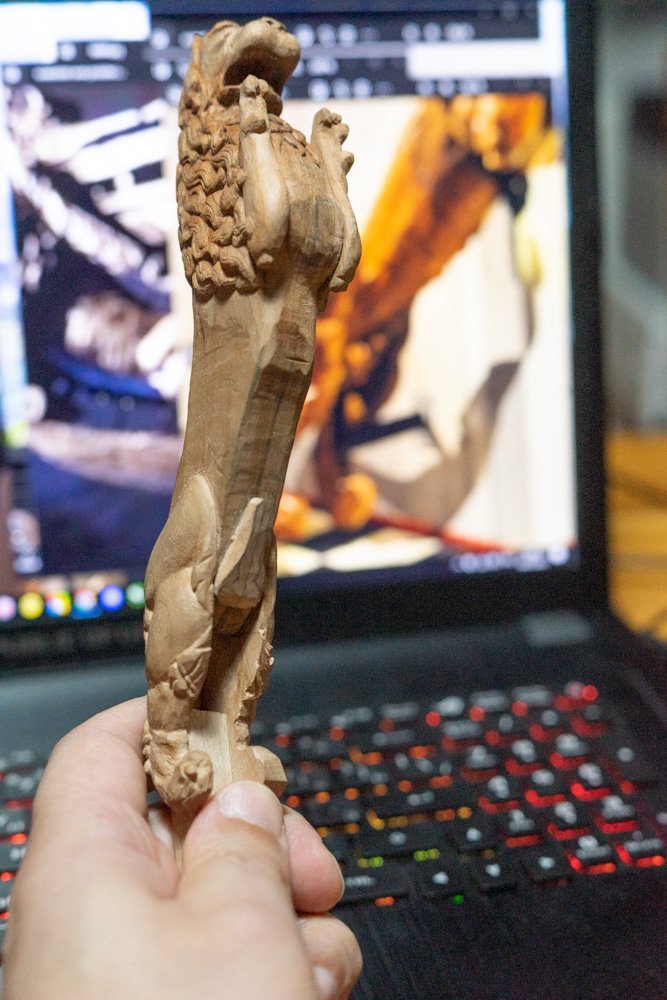
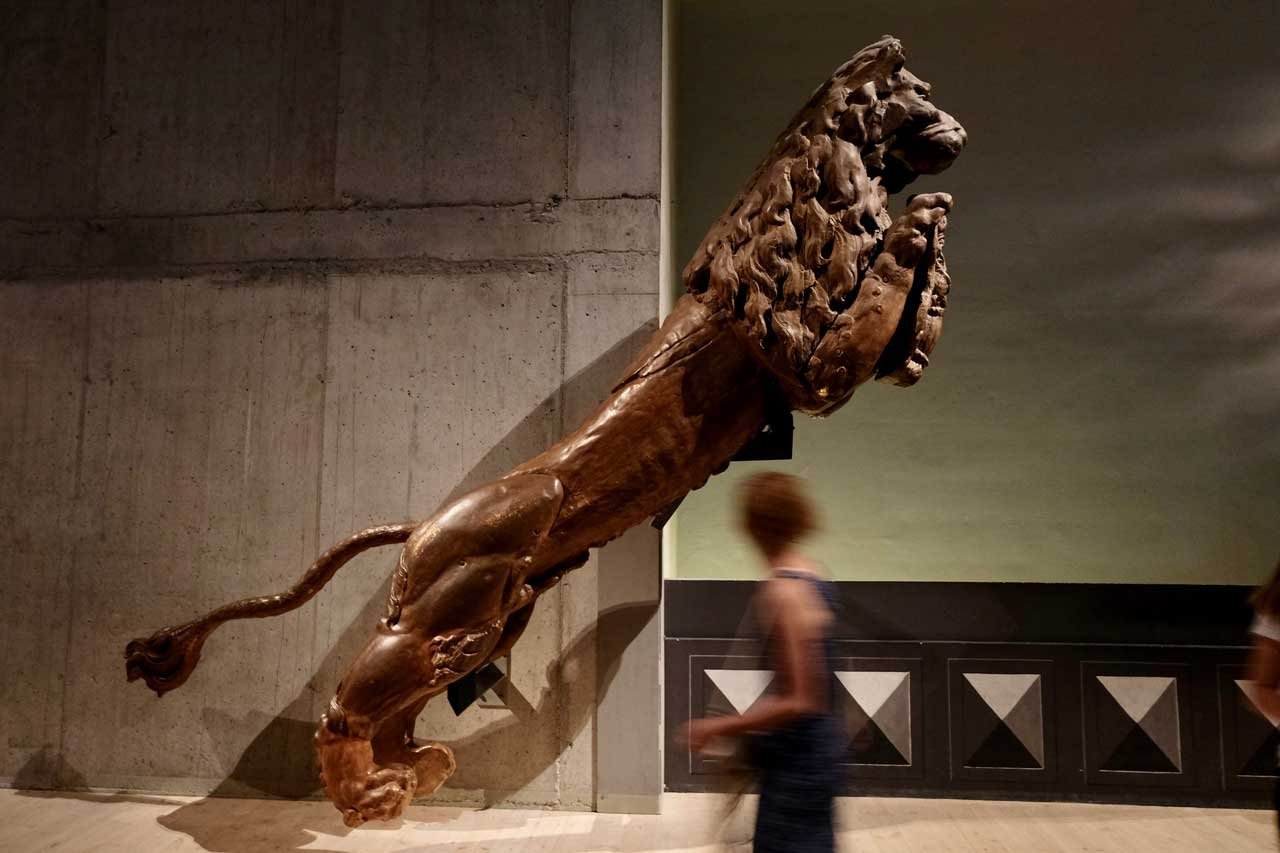


.jpg.054f162d62a35939beb4dfc0ccc30c42.jpg)
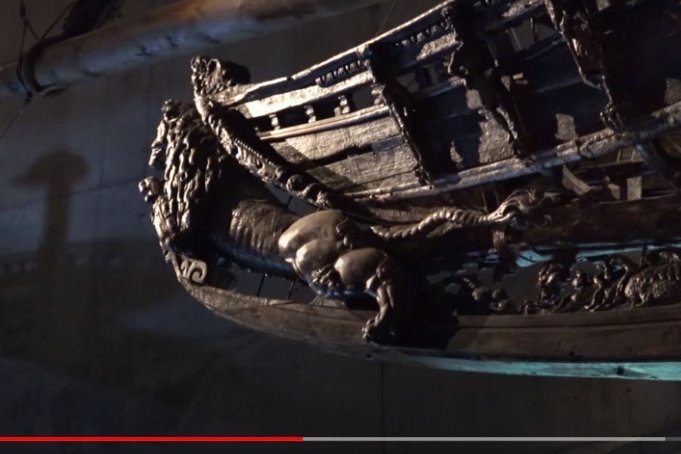
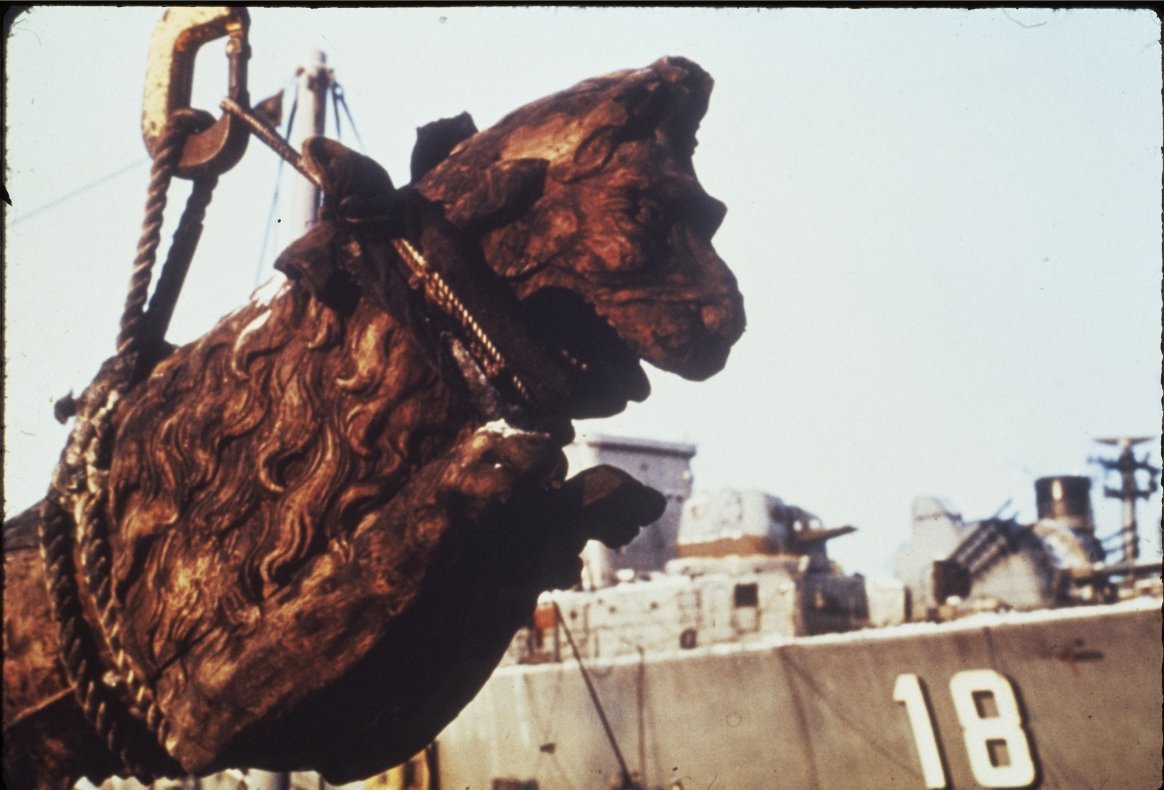
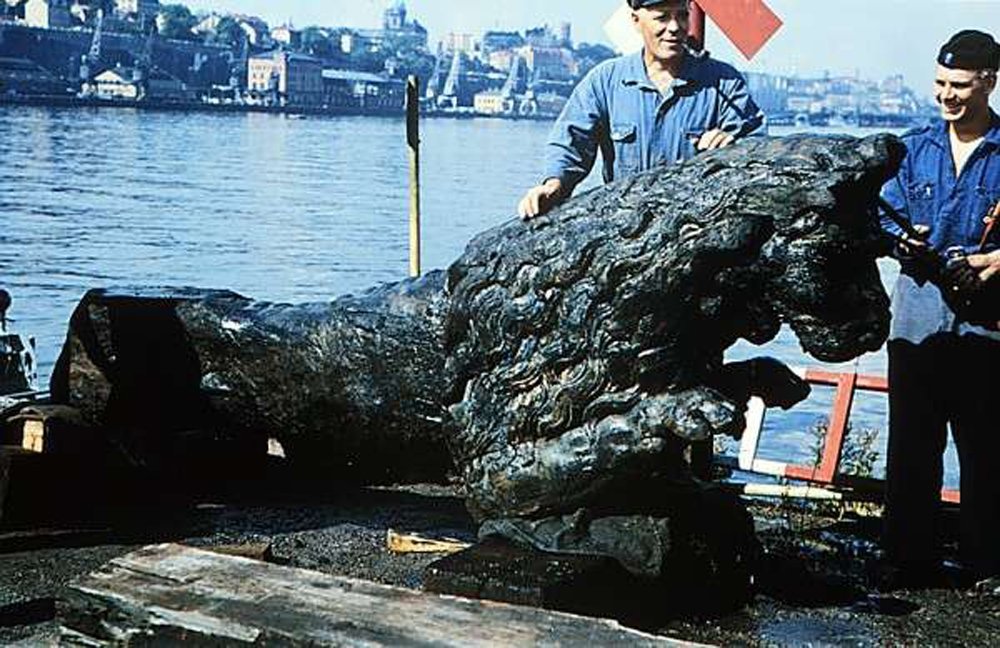
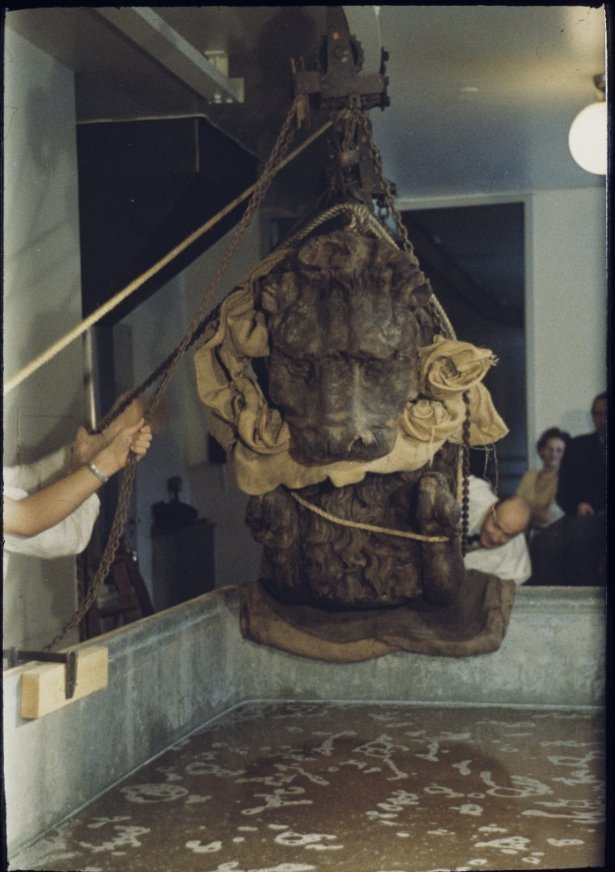

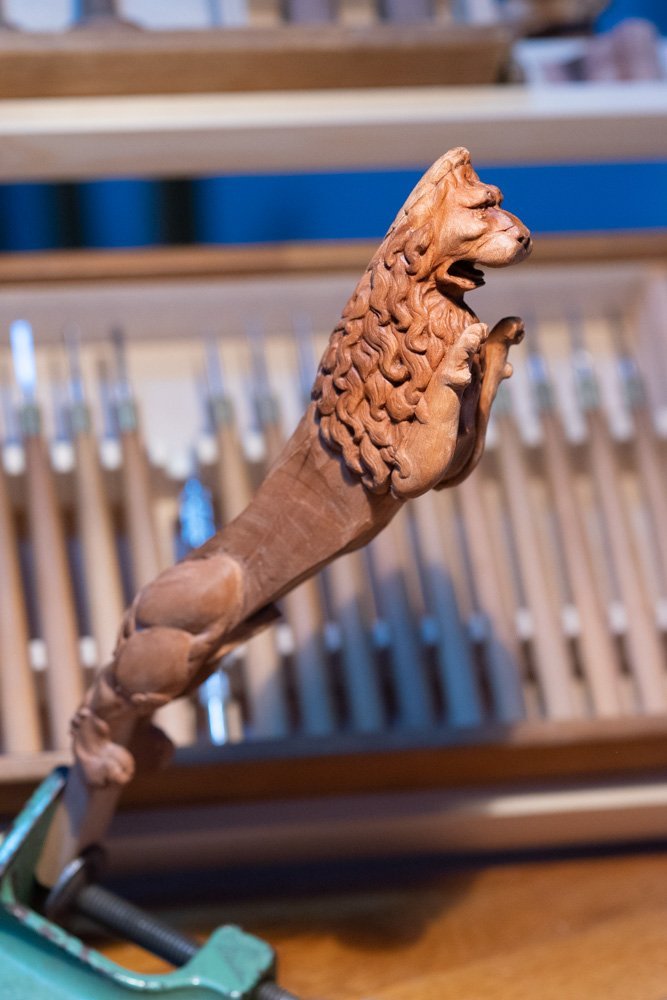
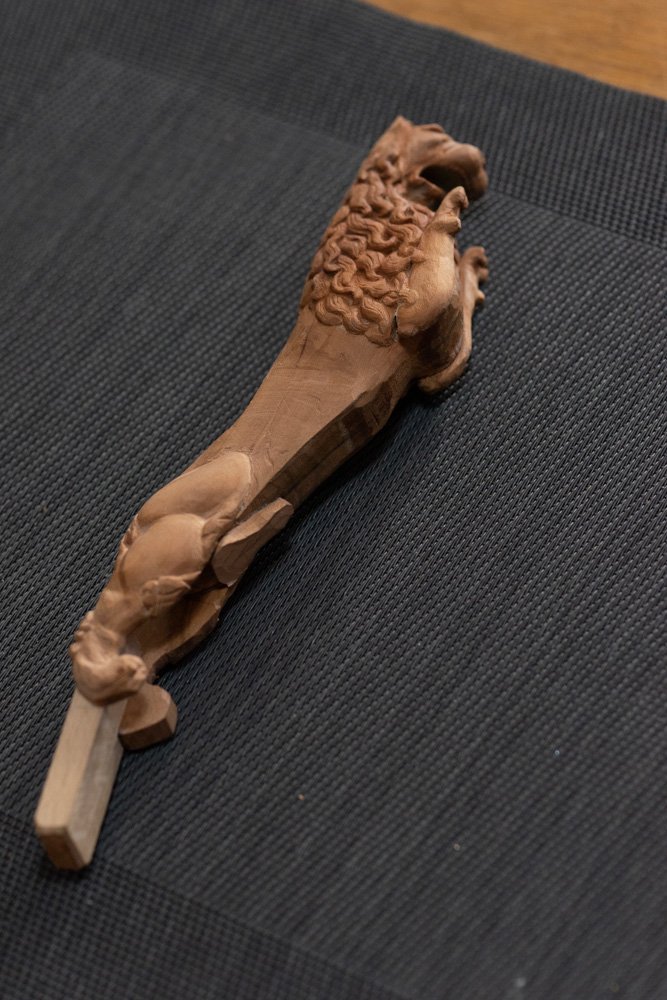



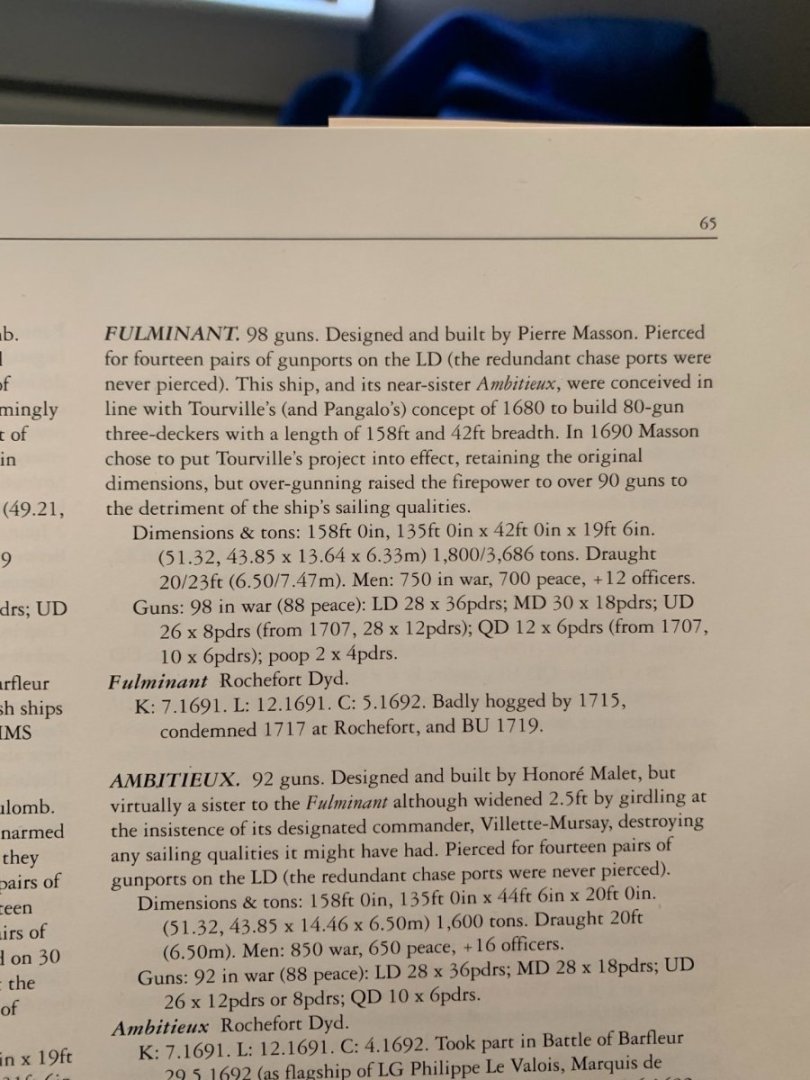

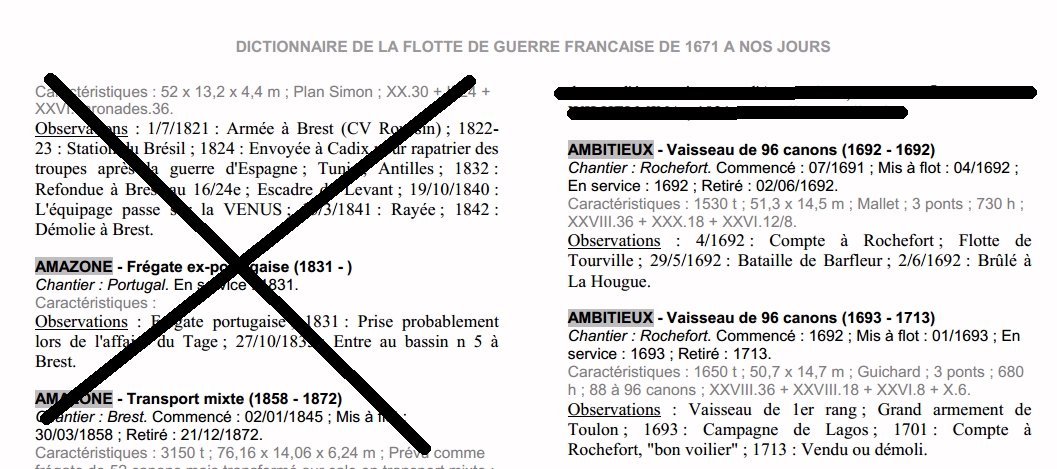
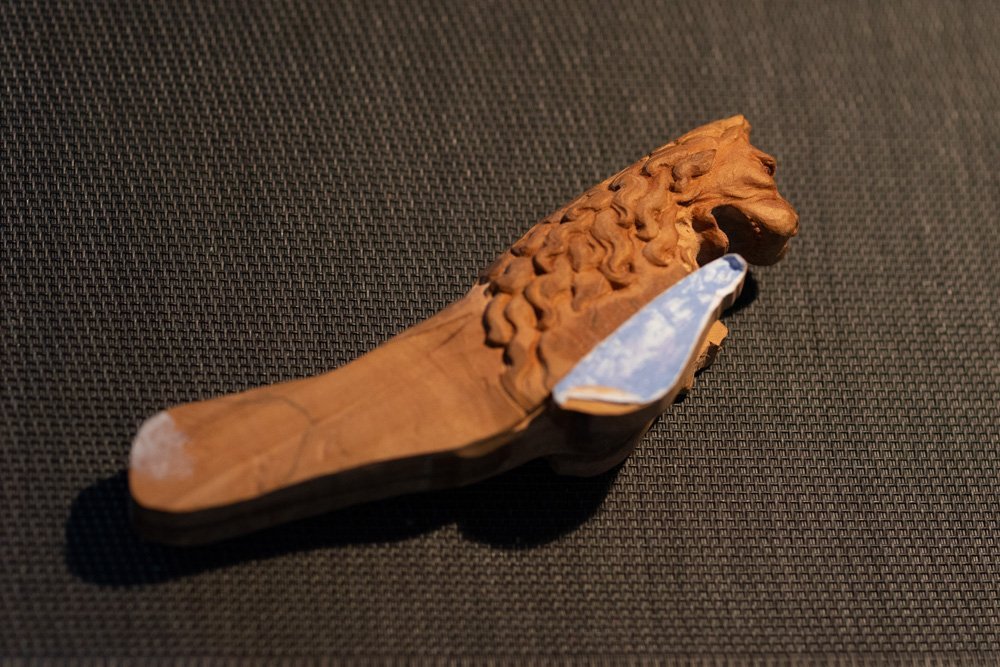
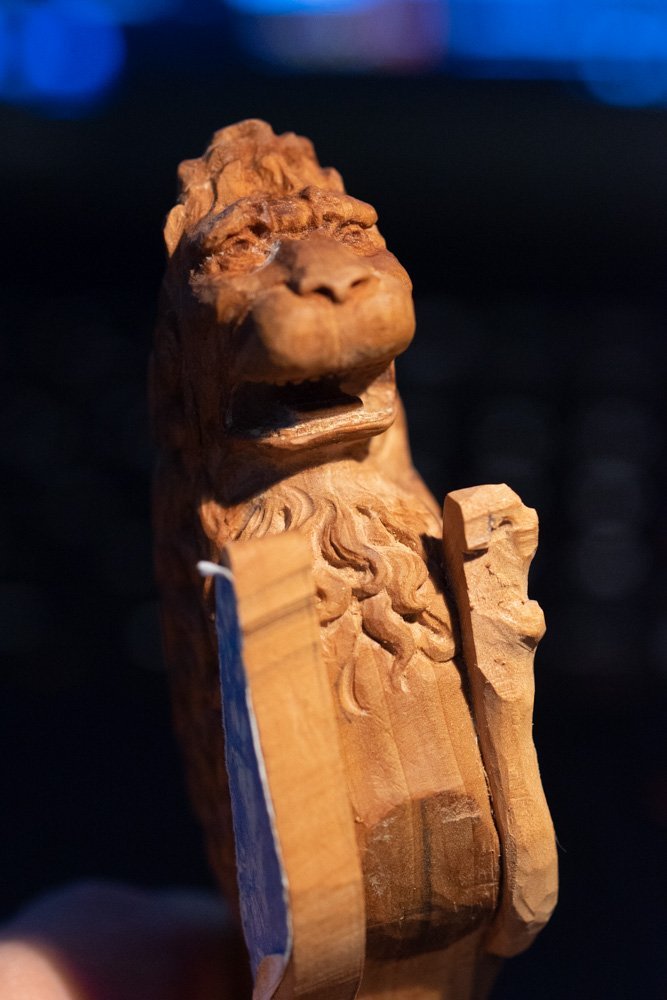
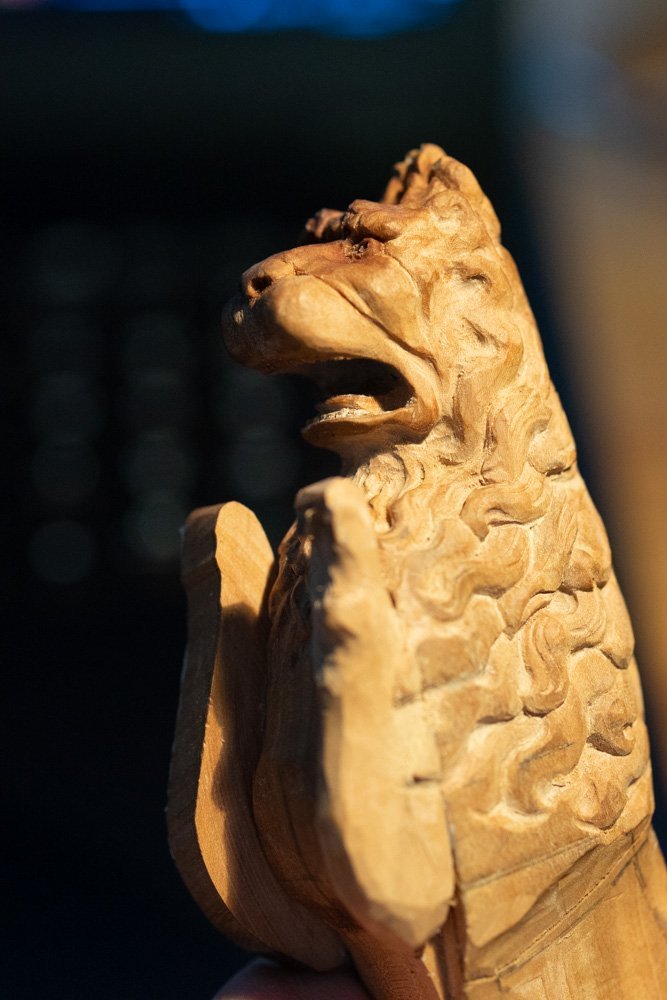
.jpg.365b730d4632f13b1a61eb3c9f8f603e.jpg)
